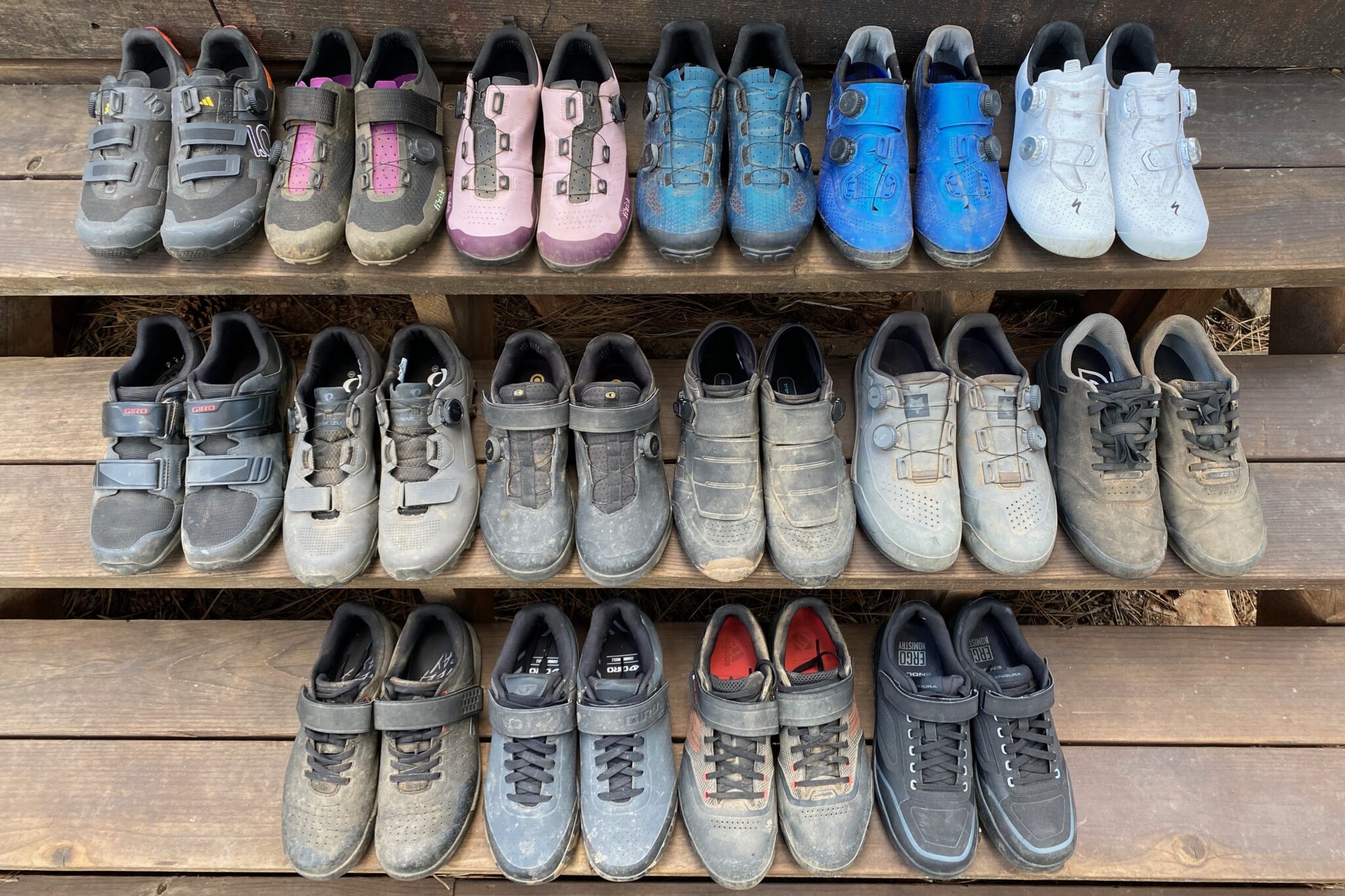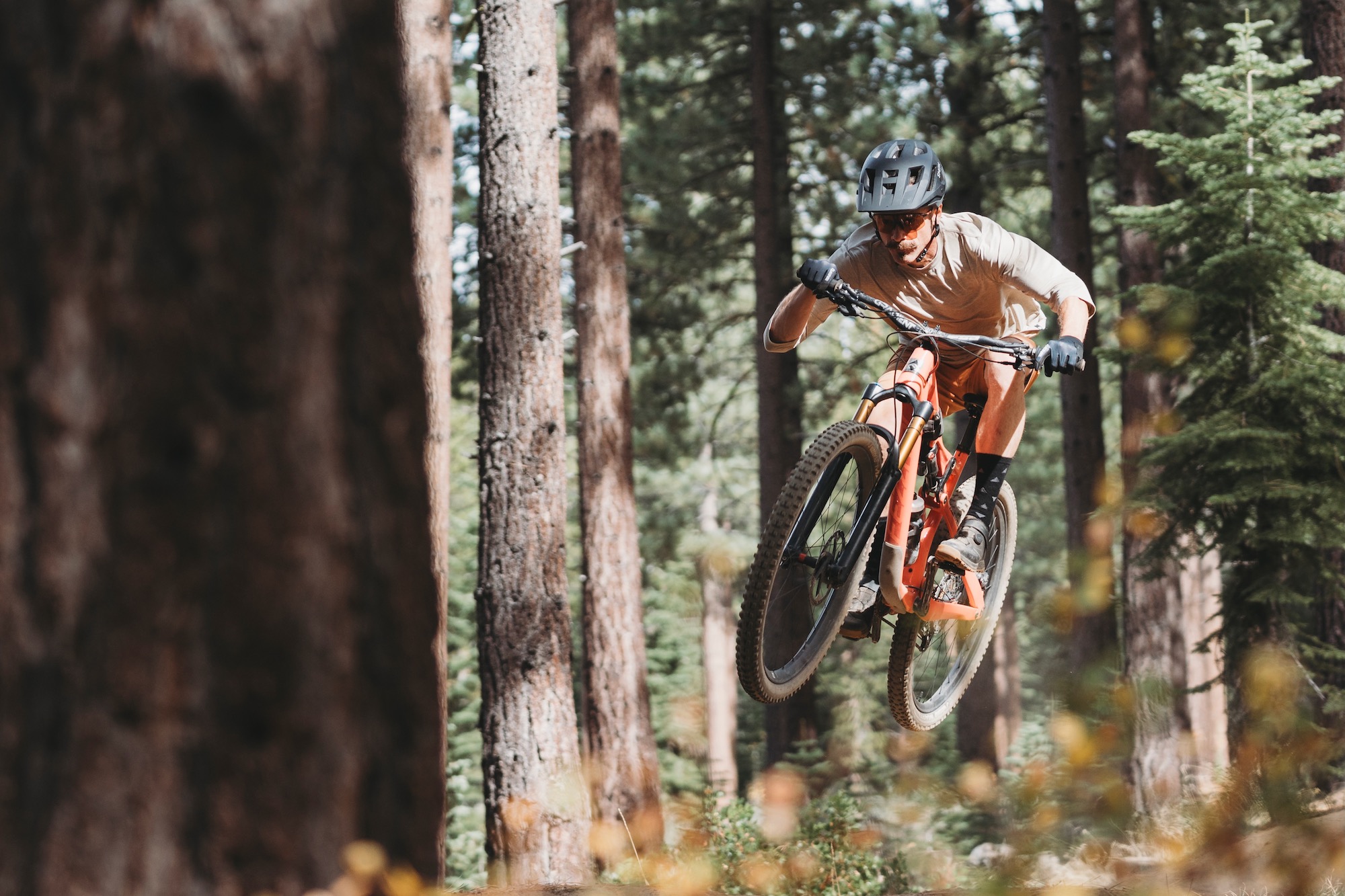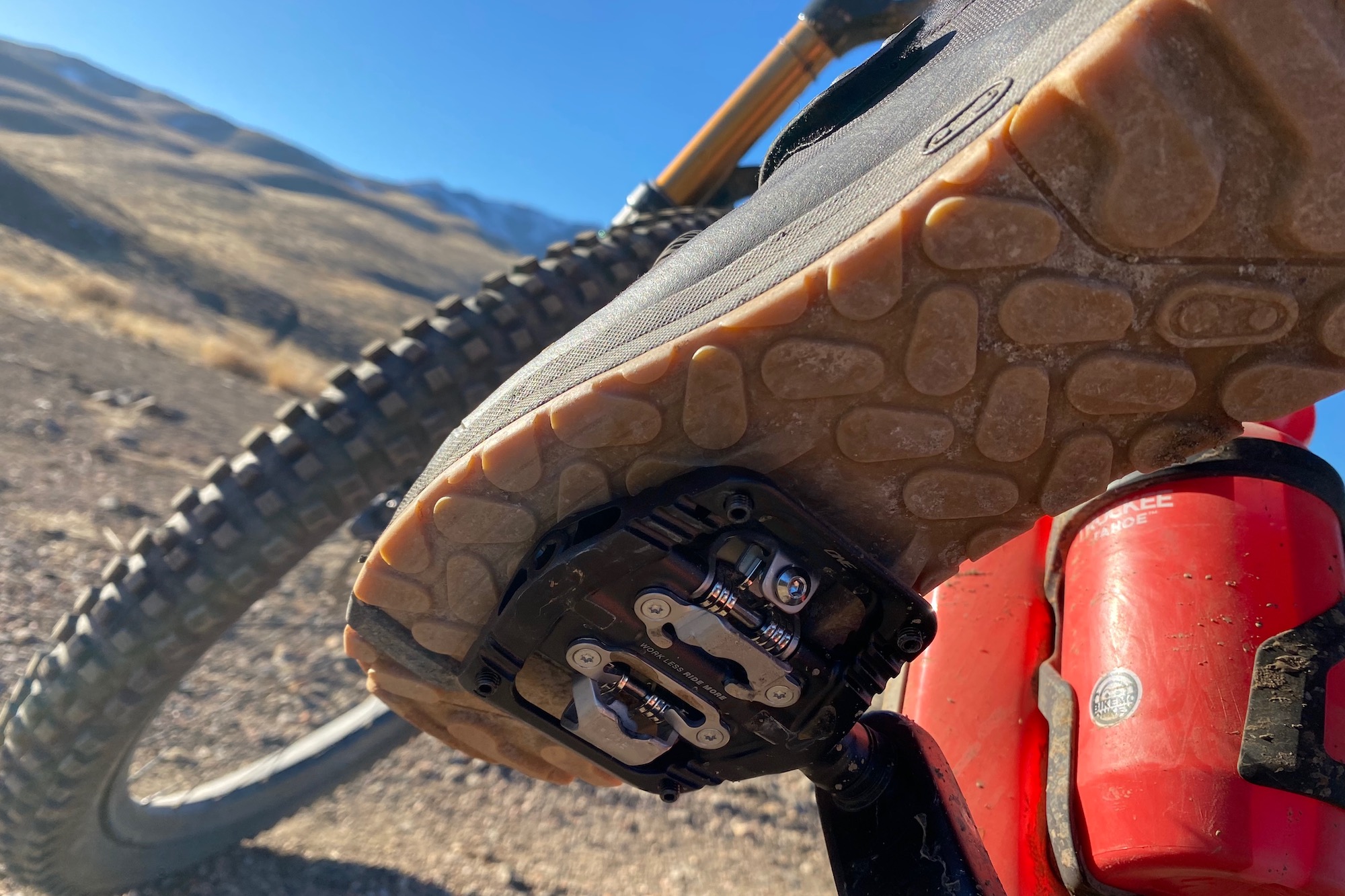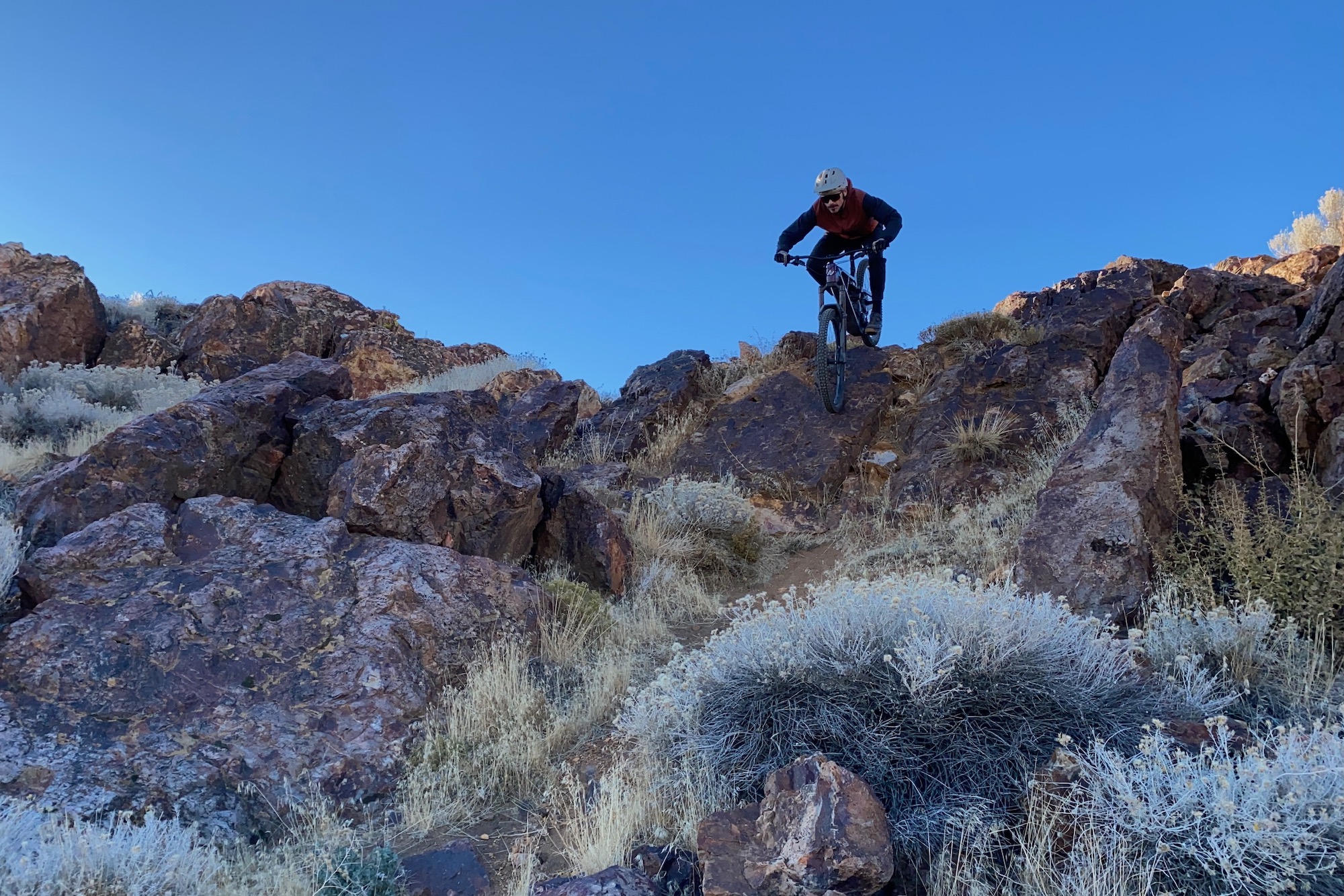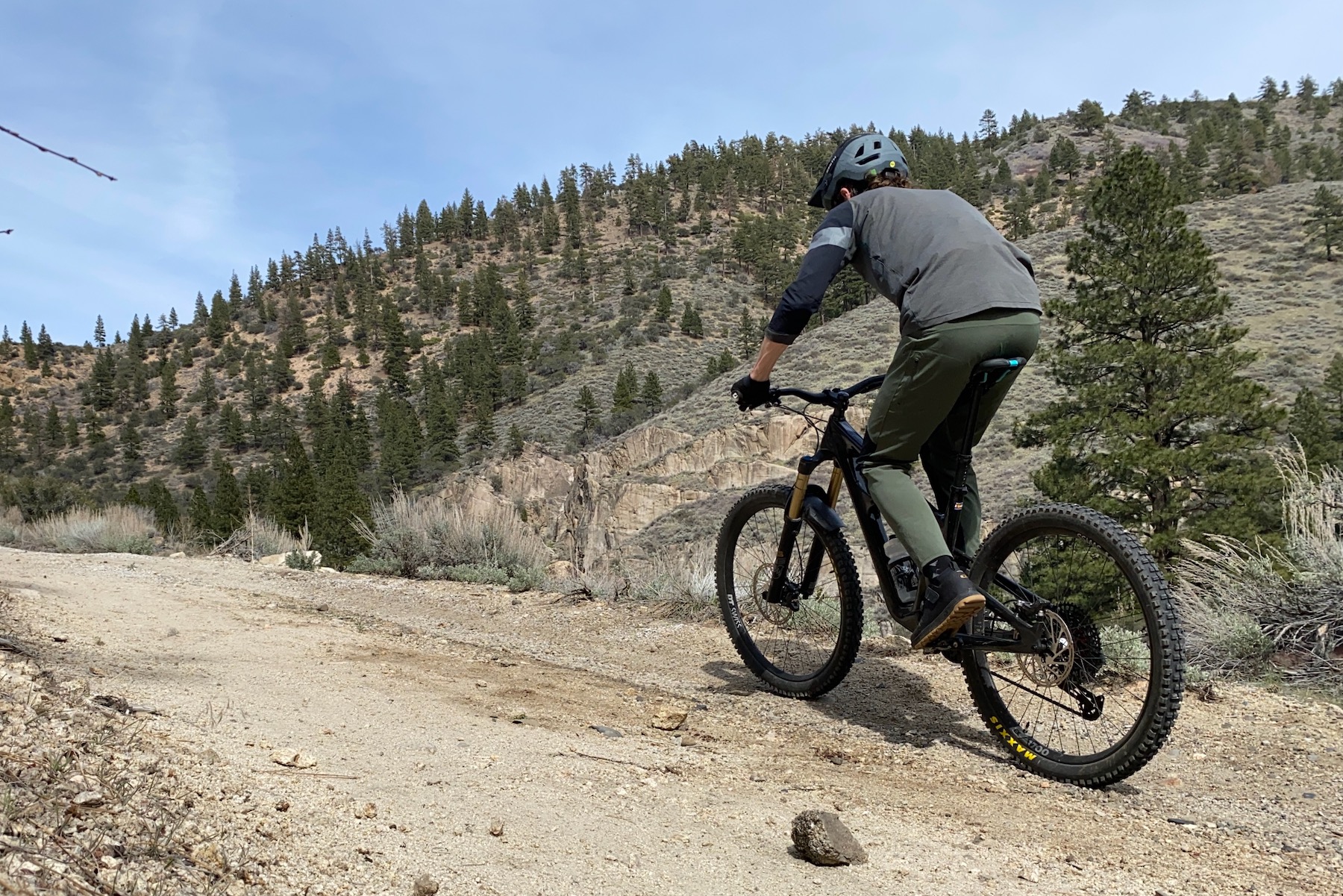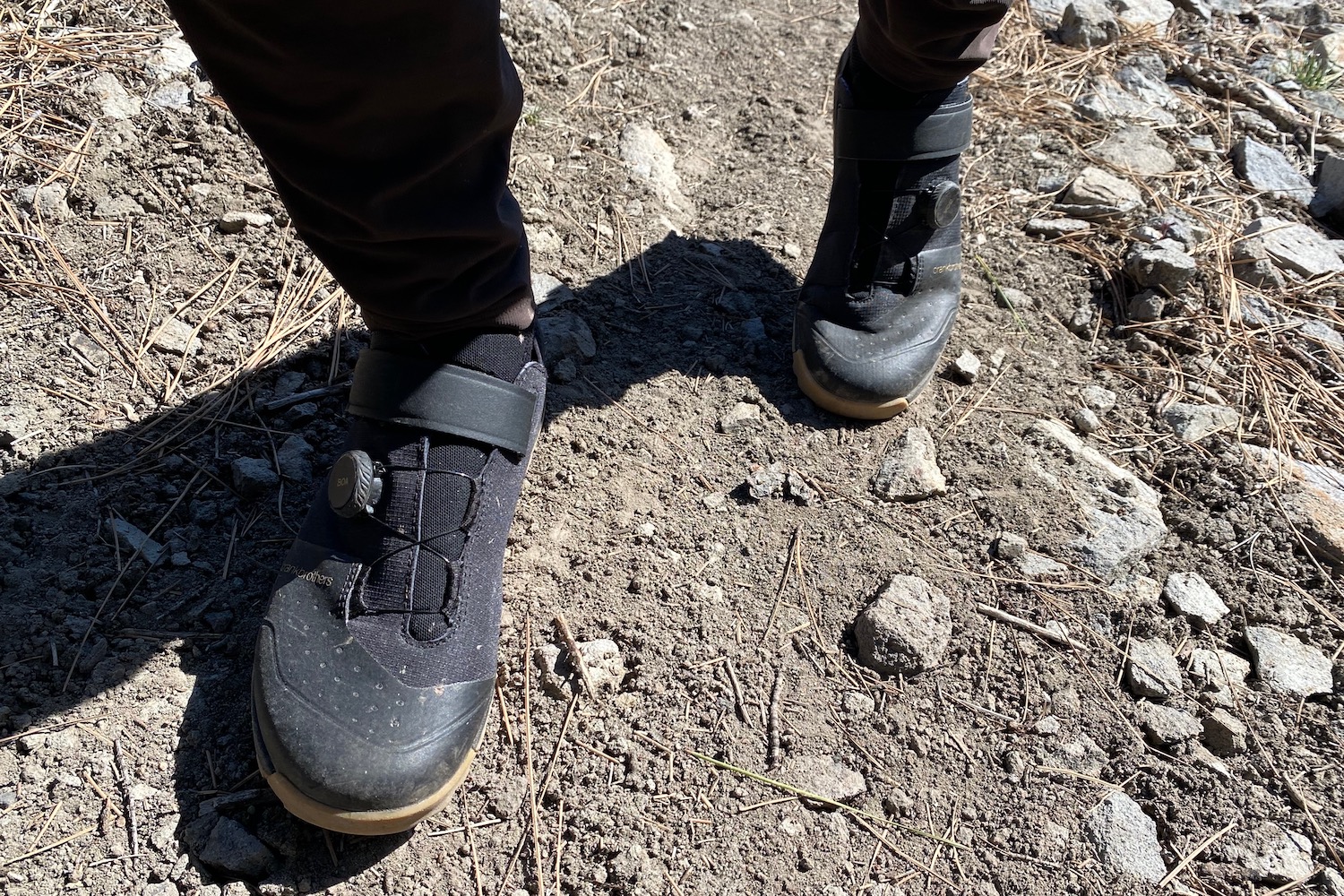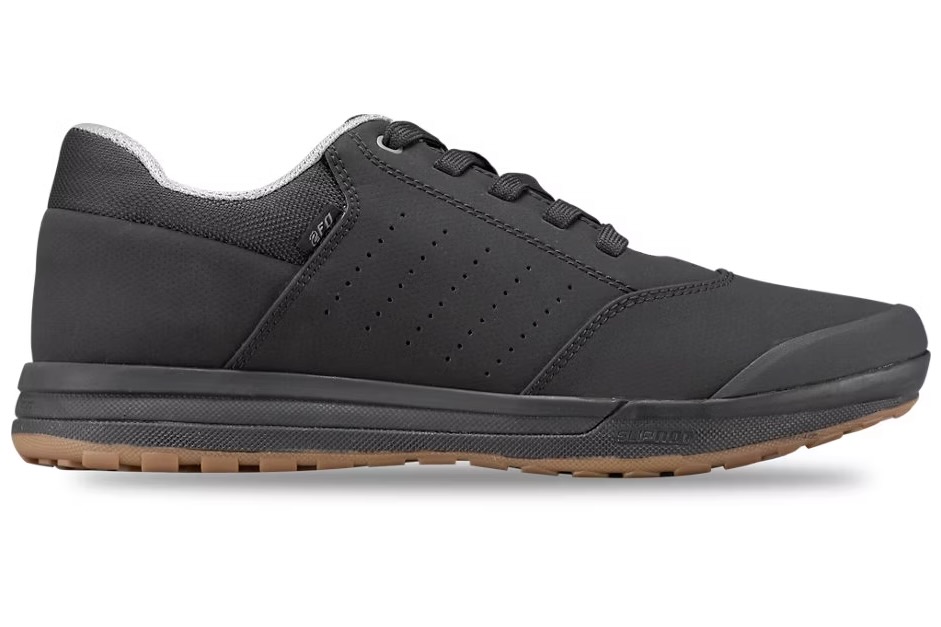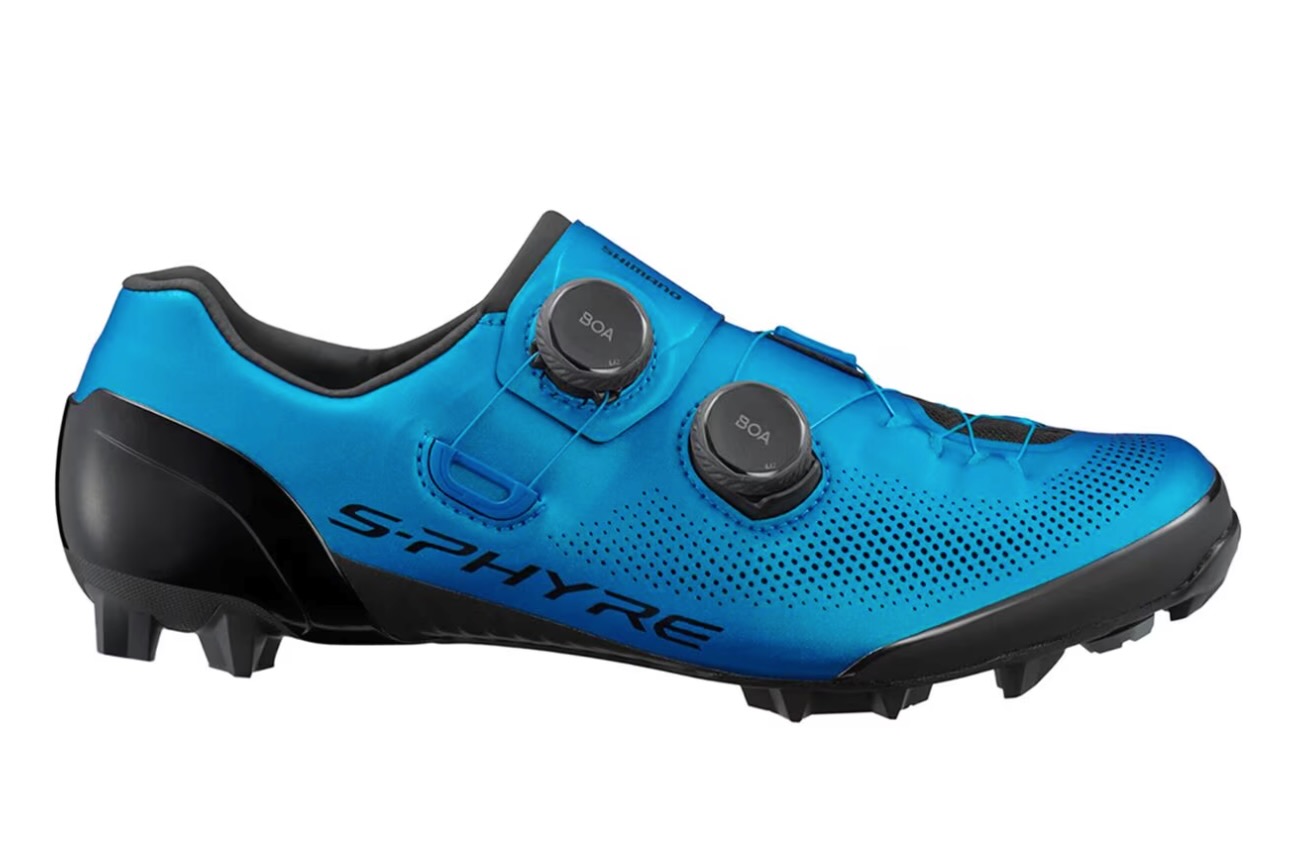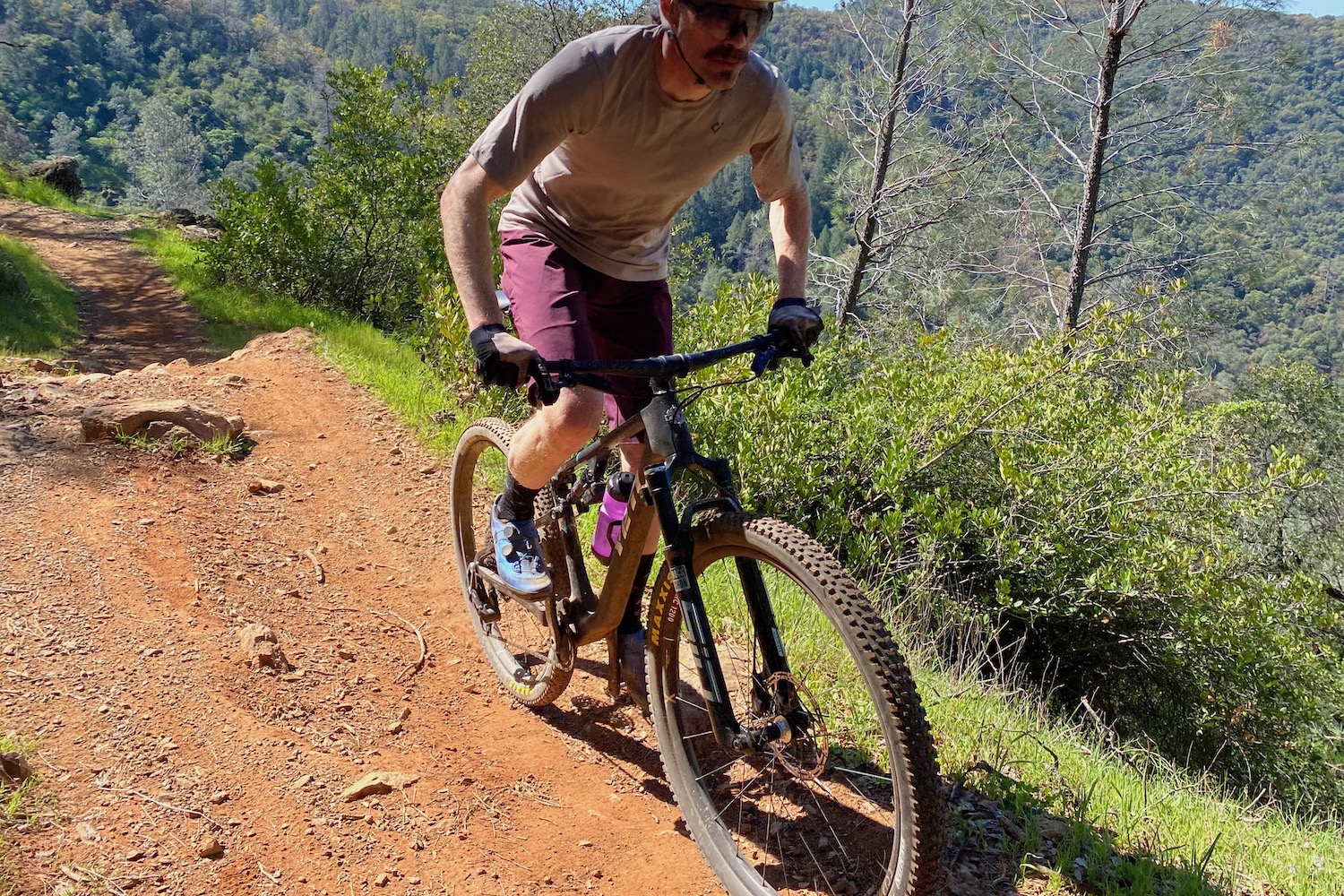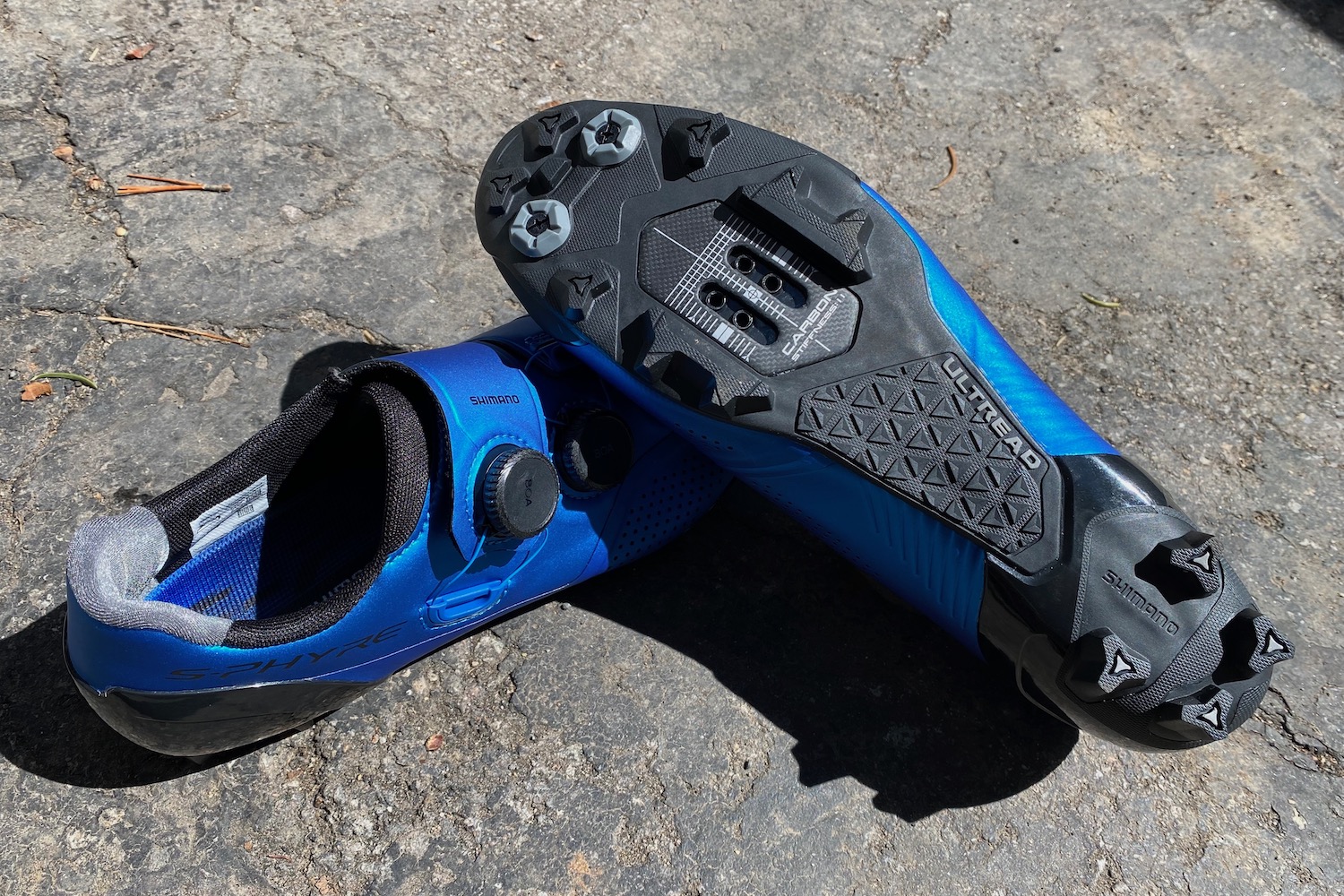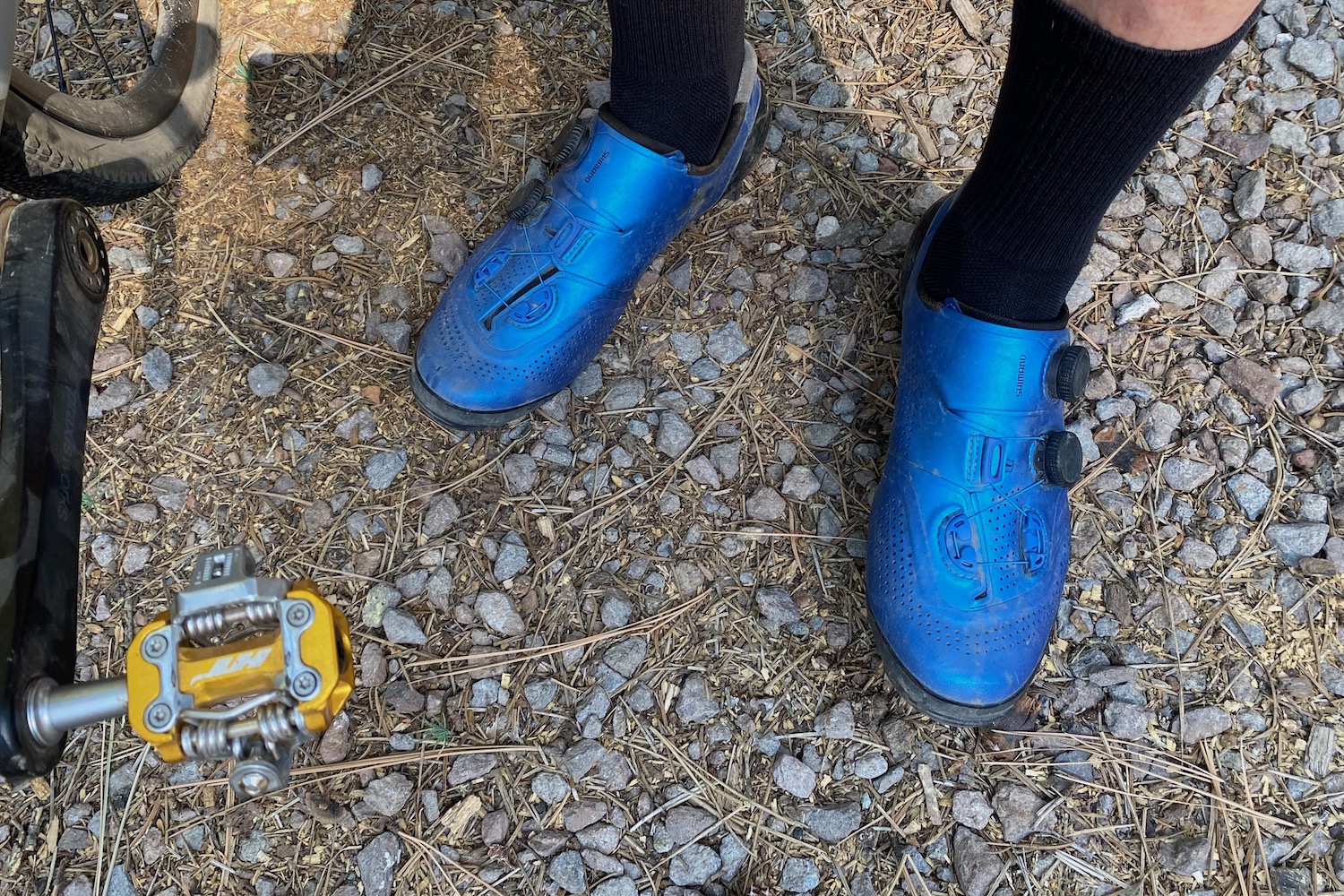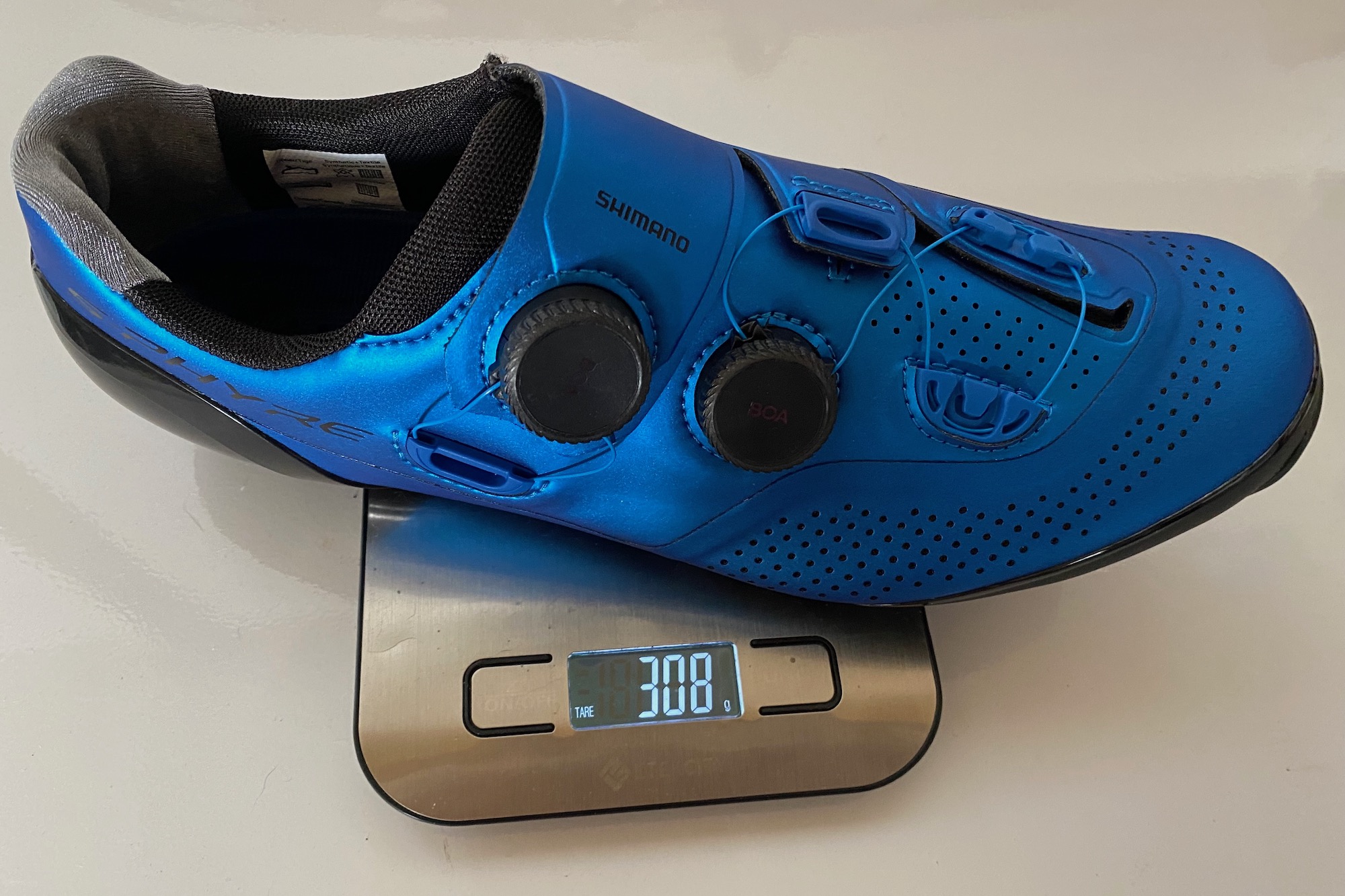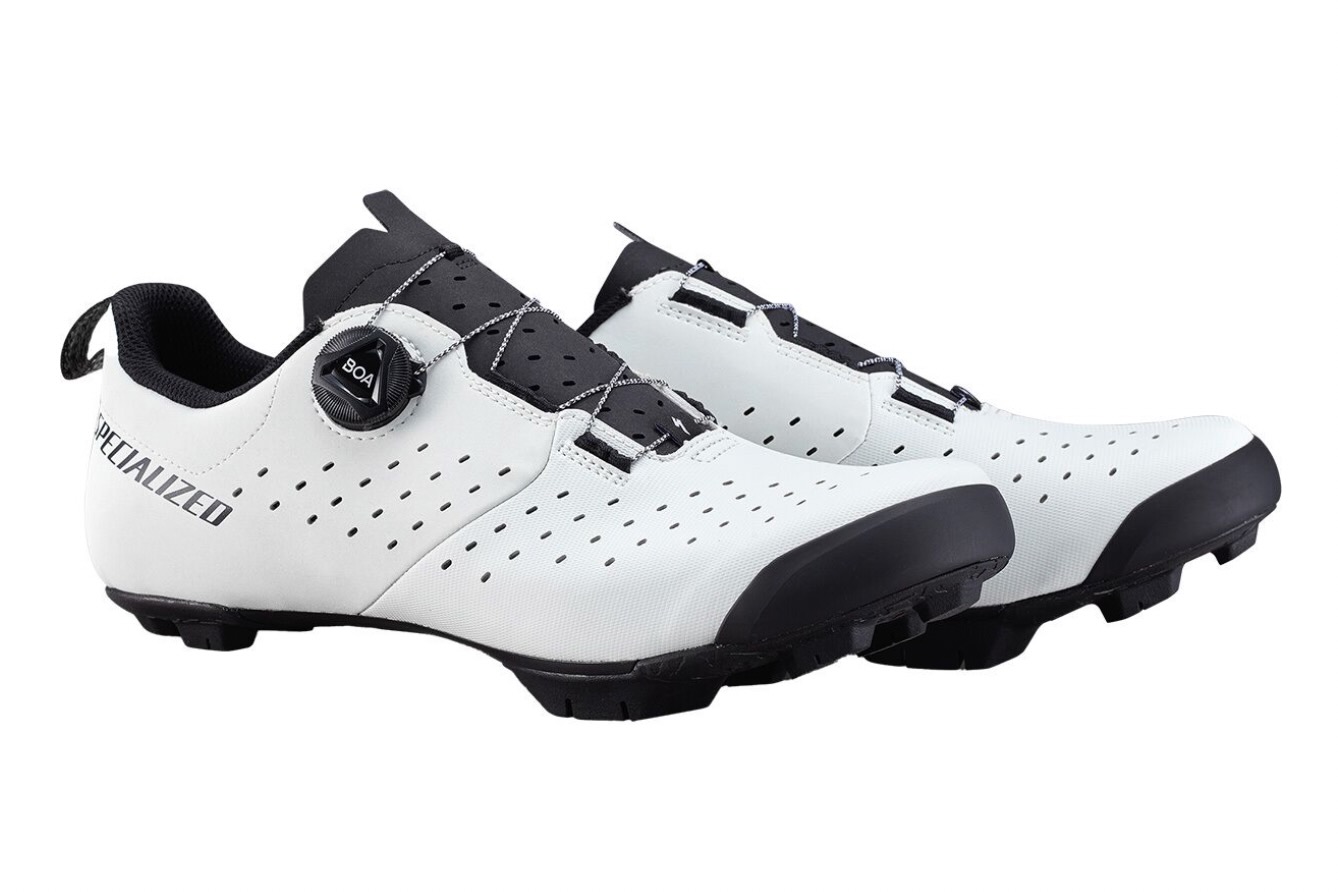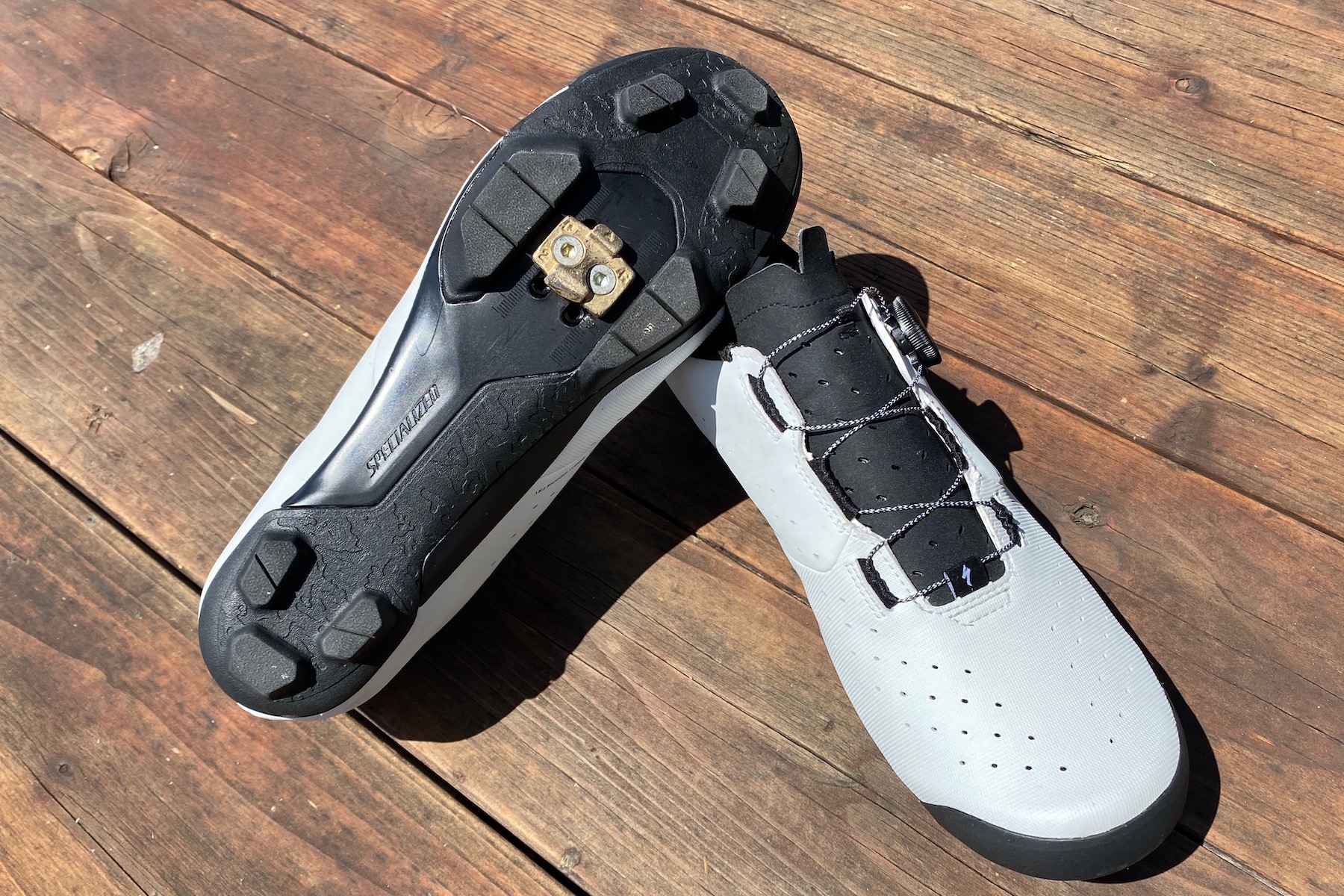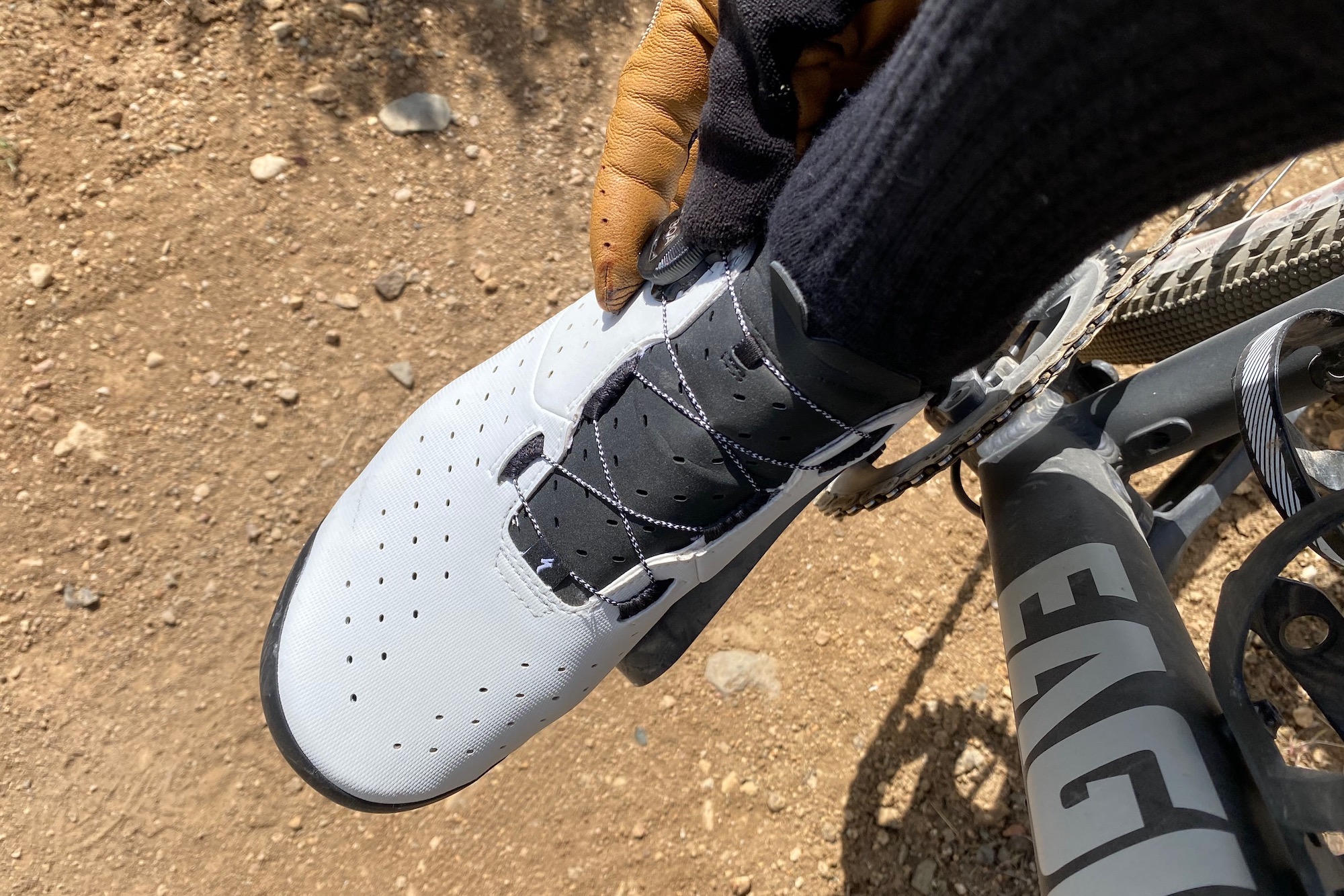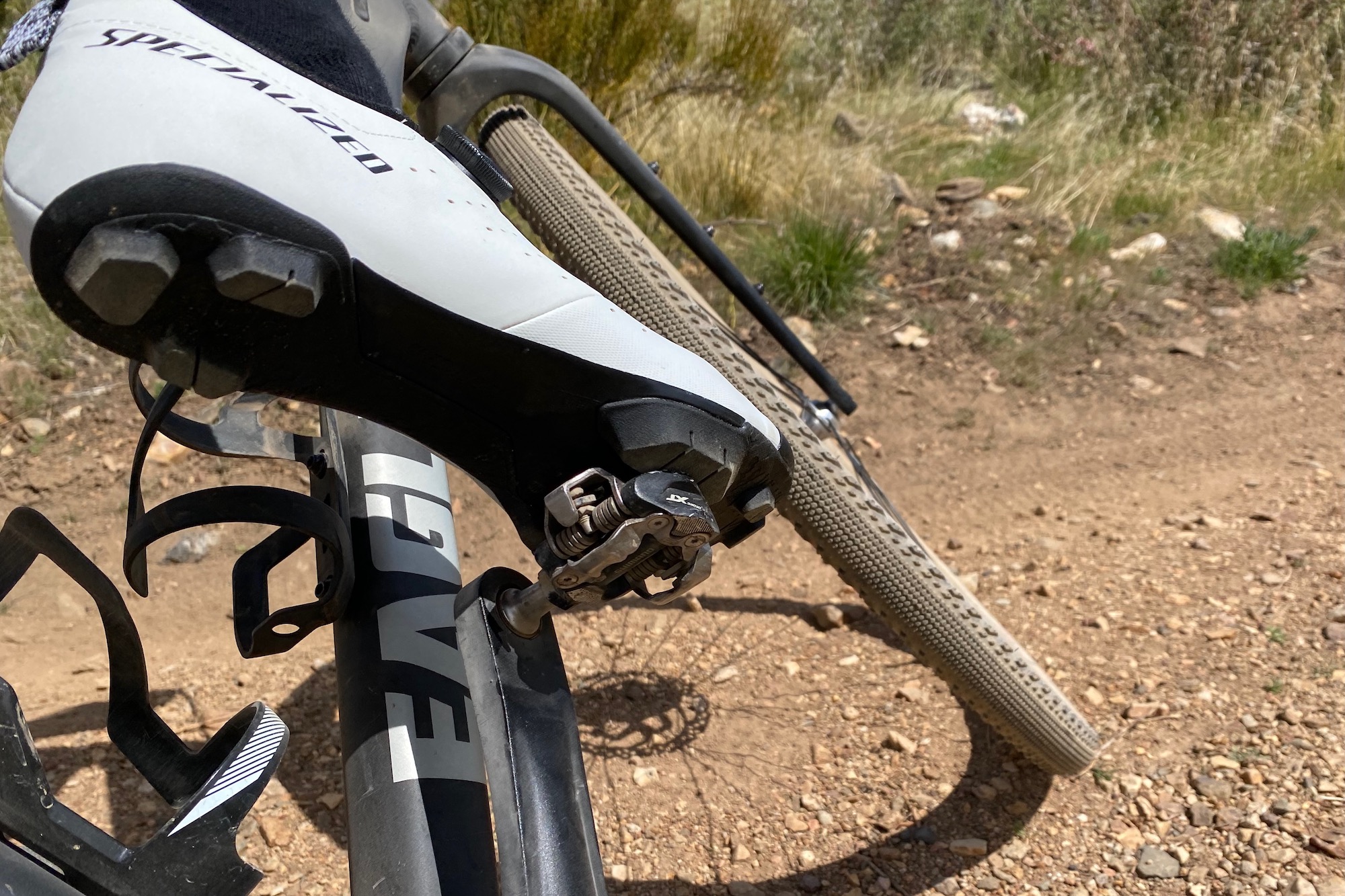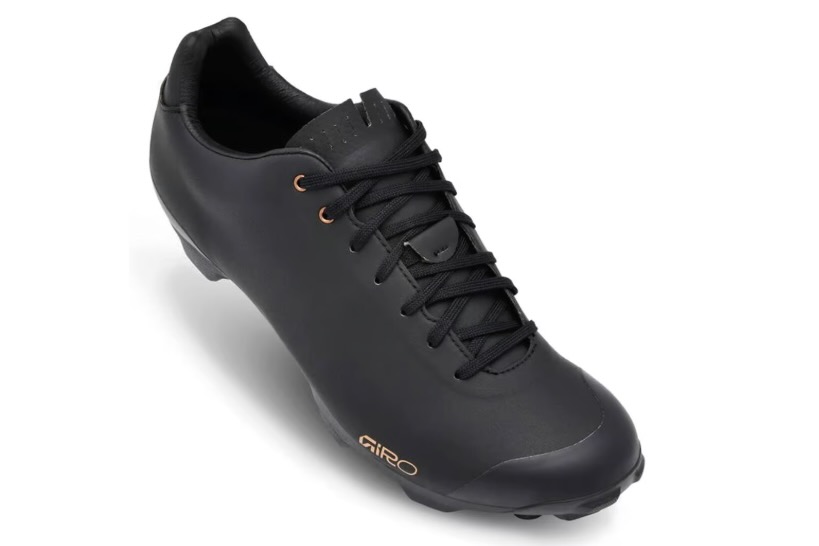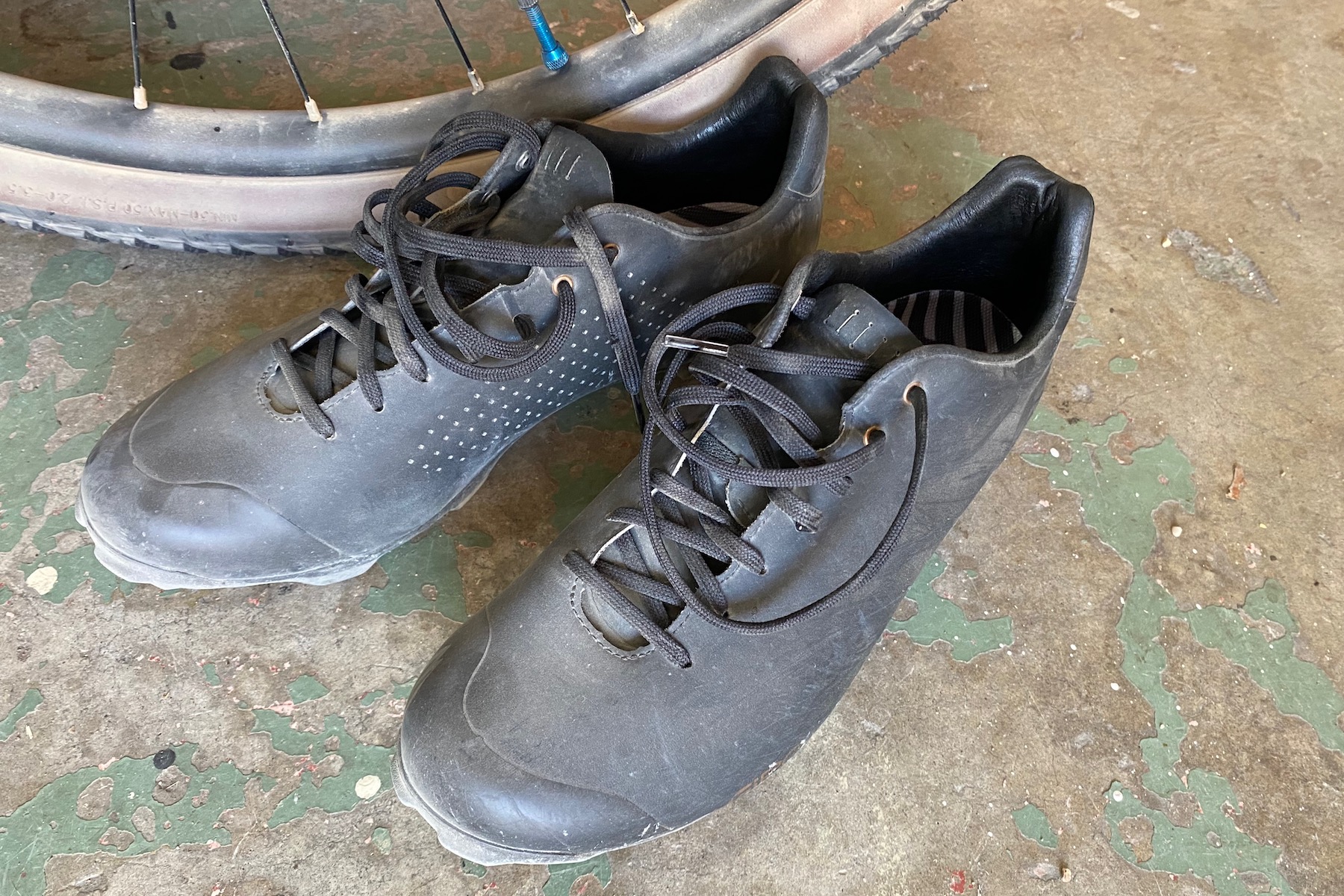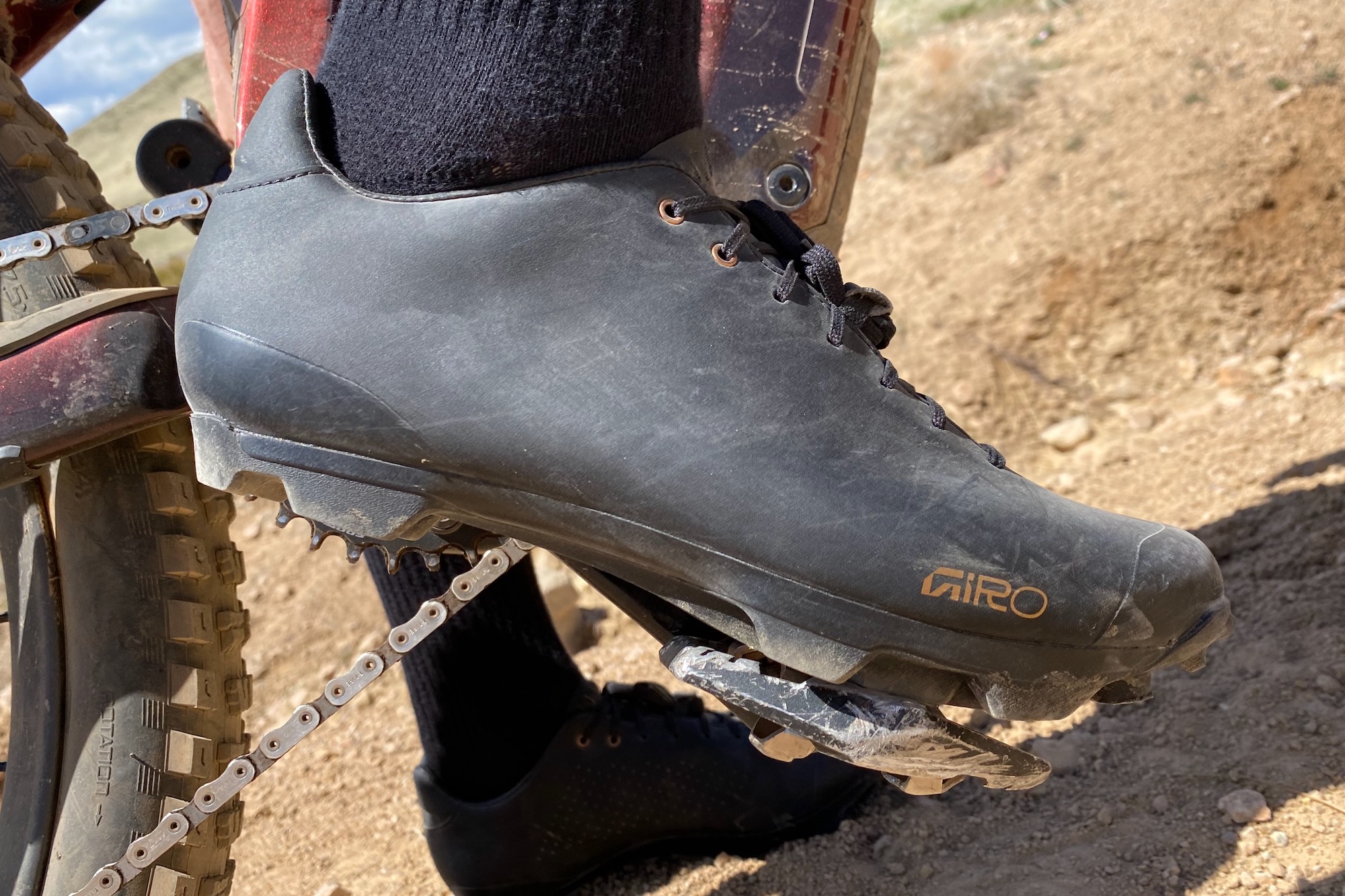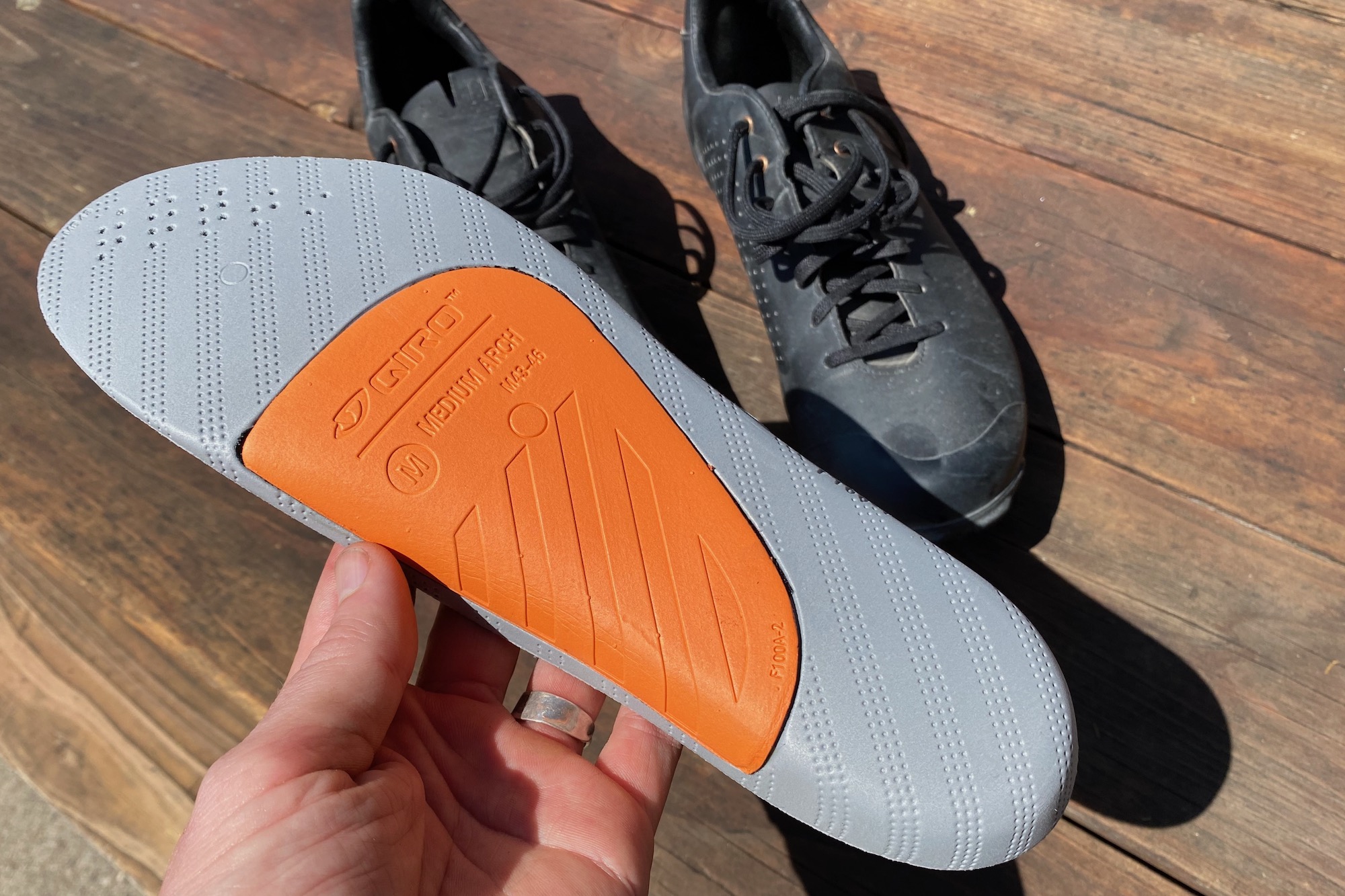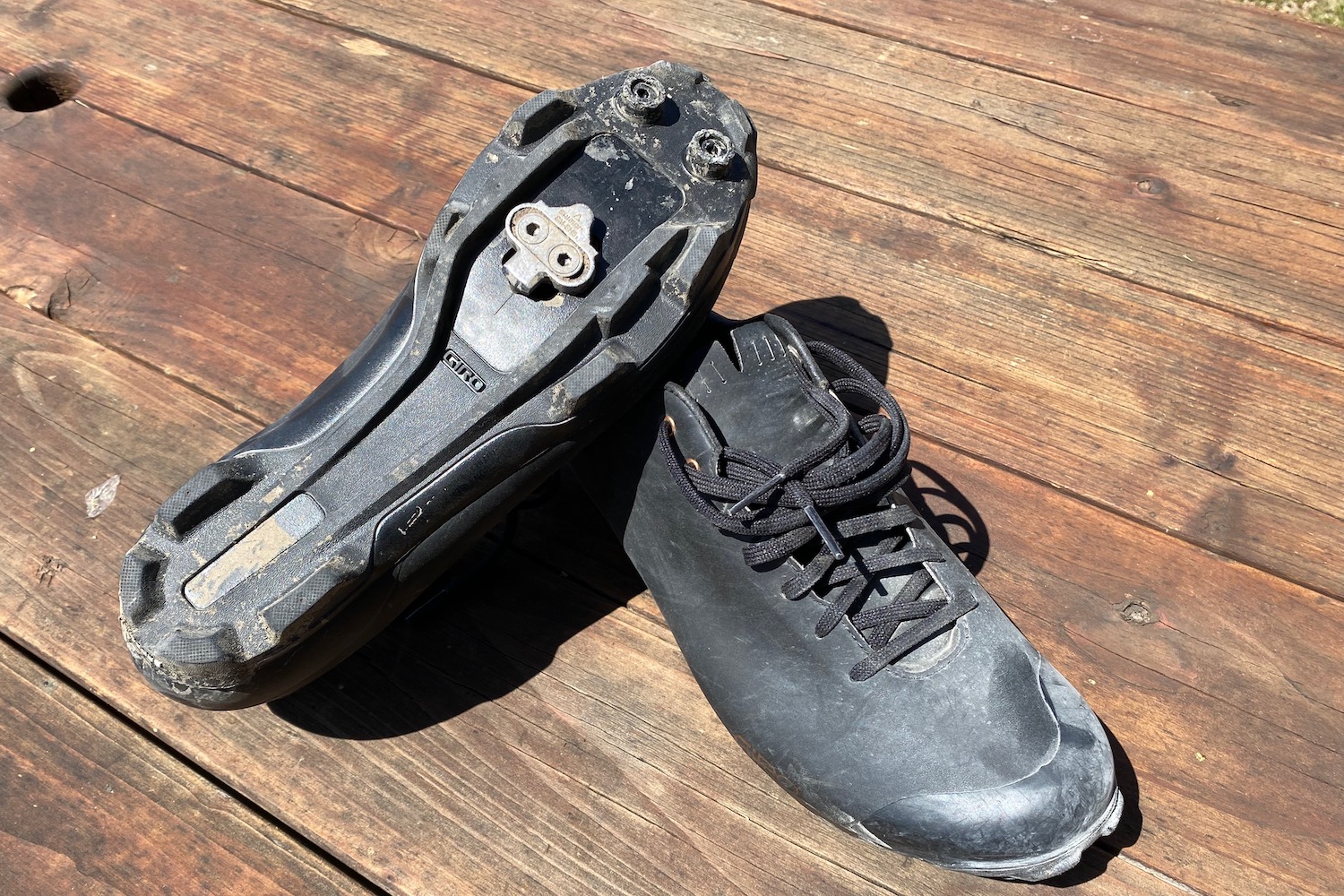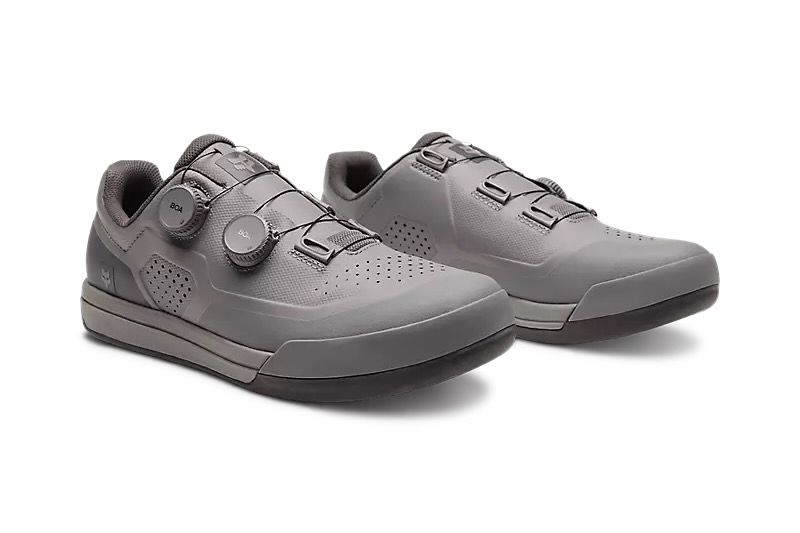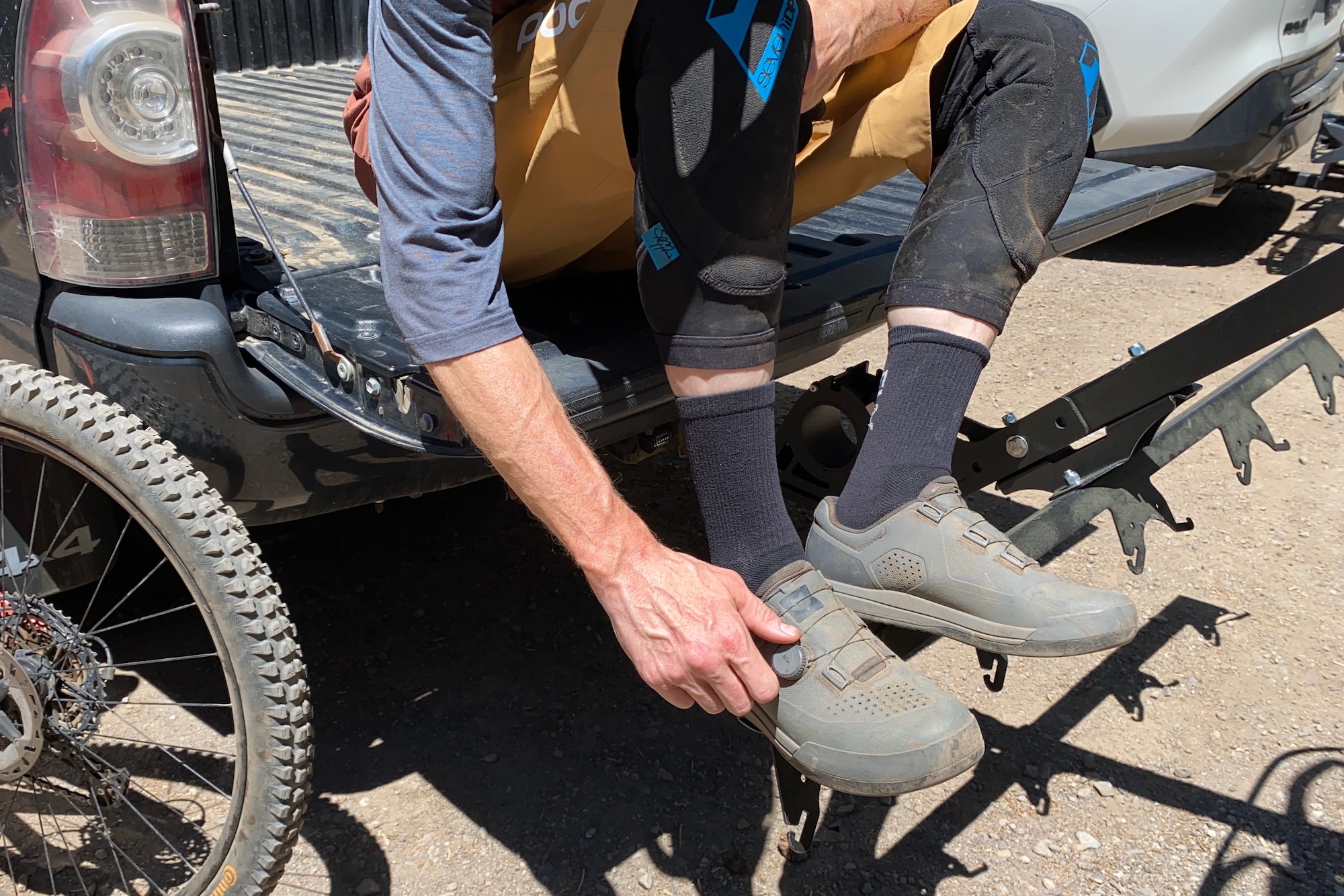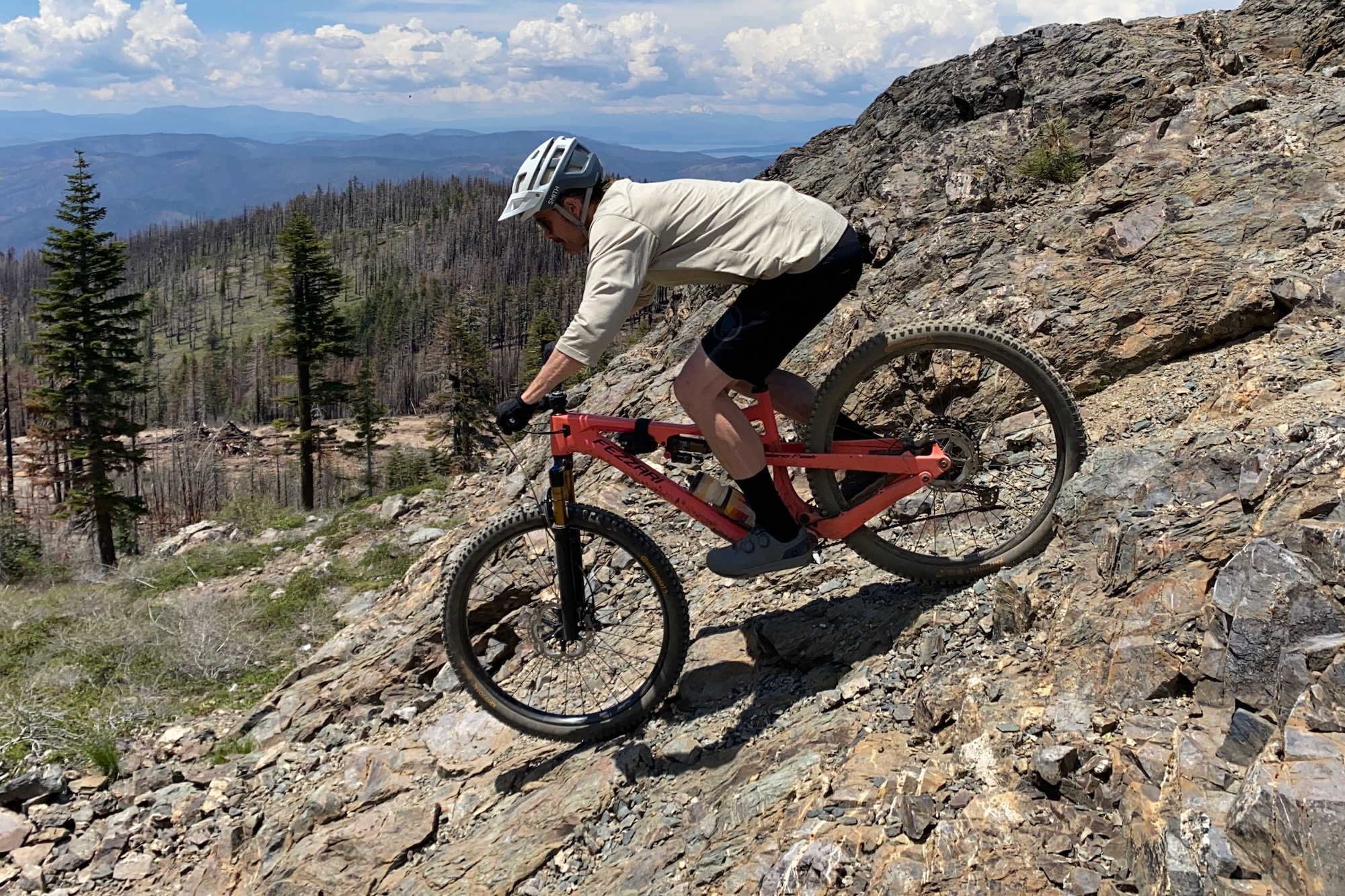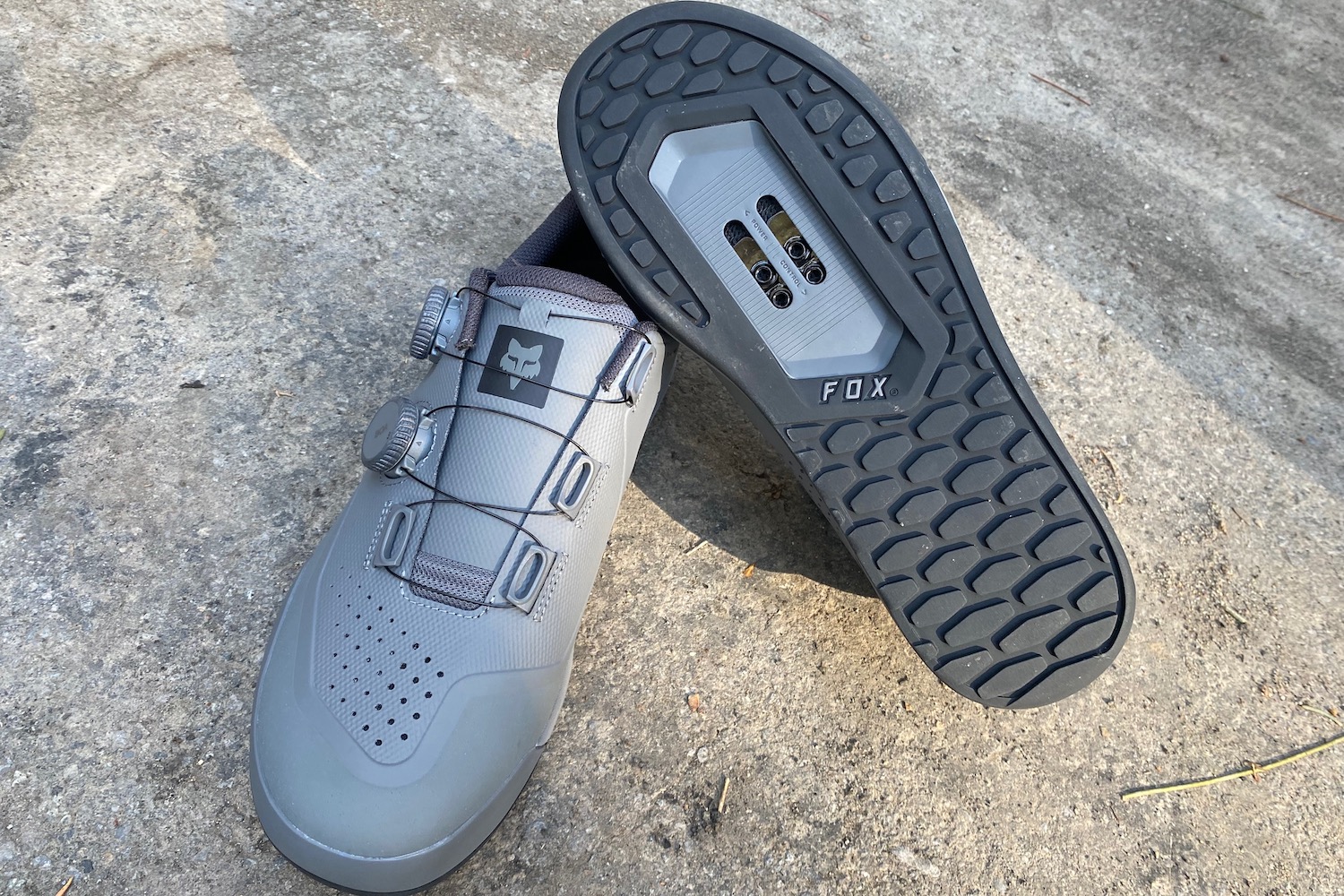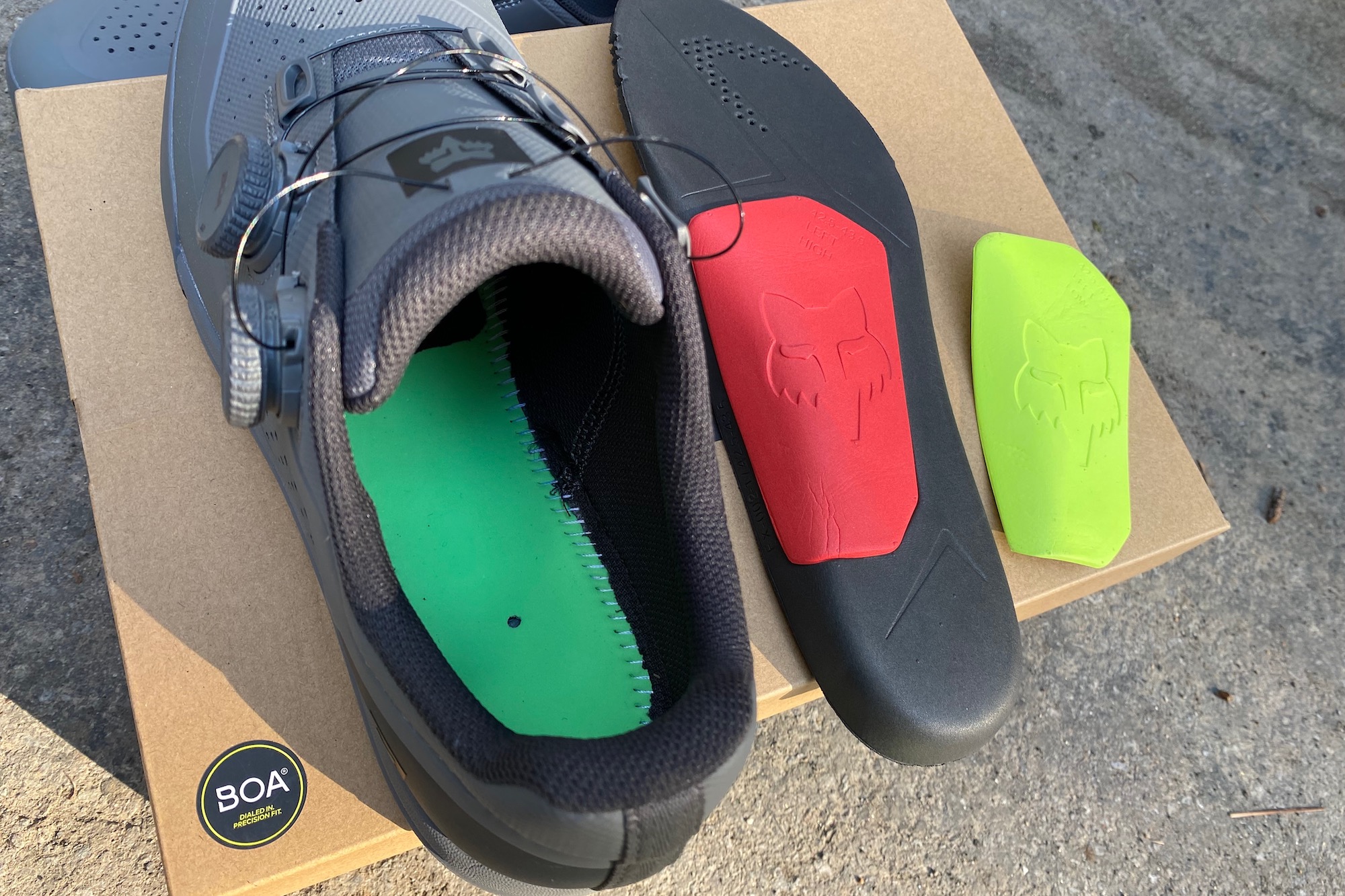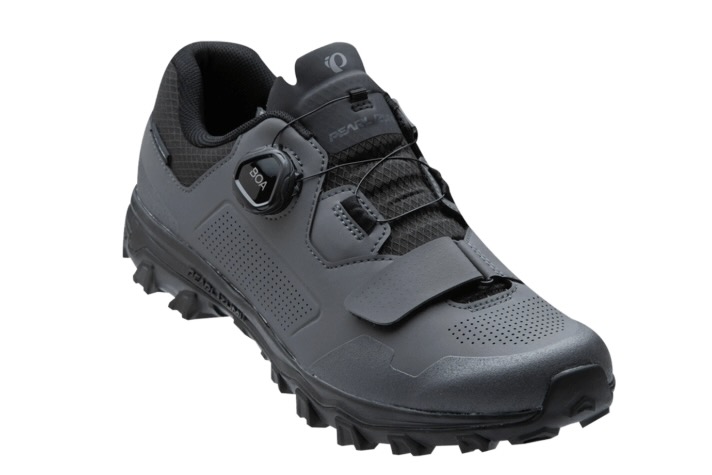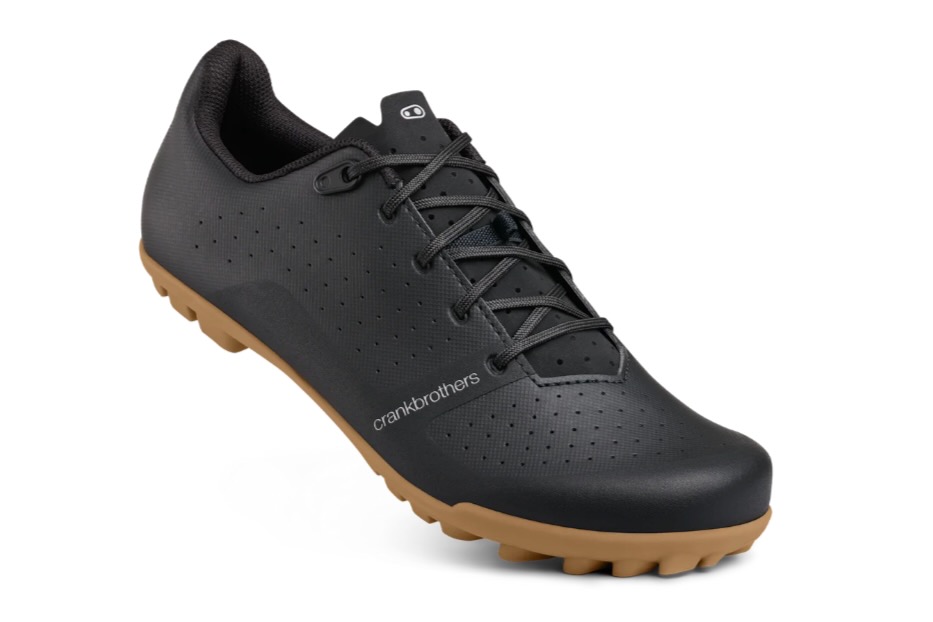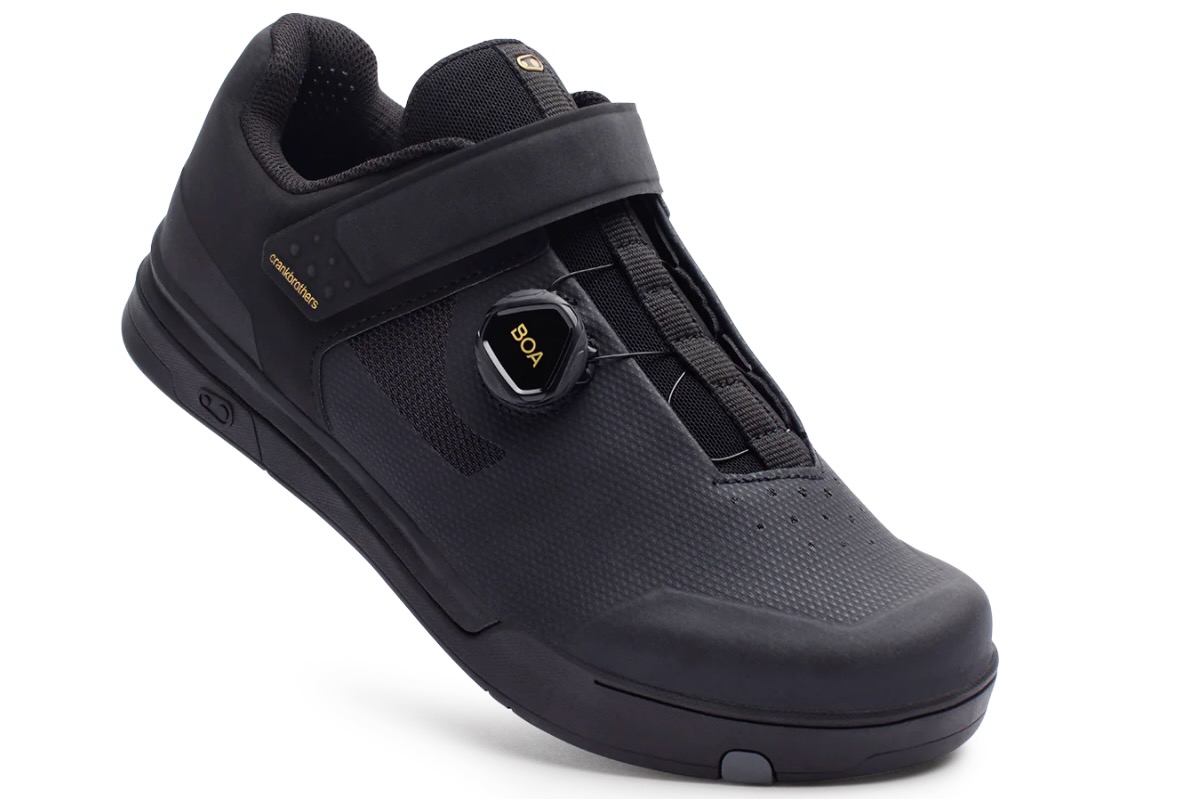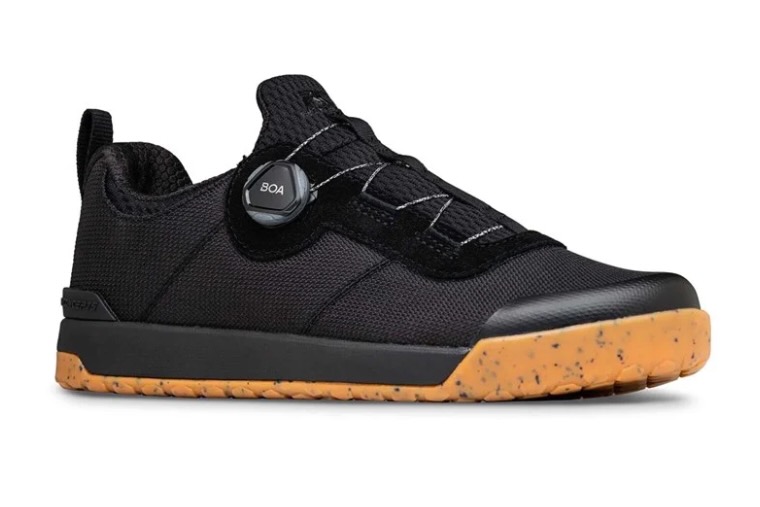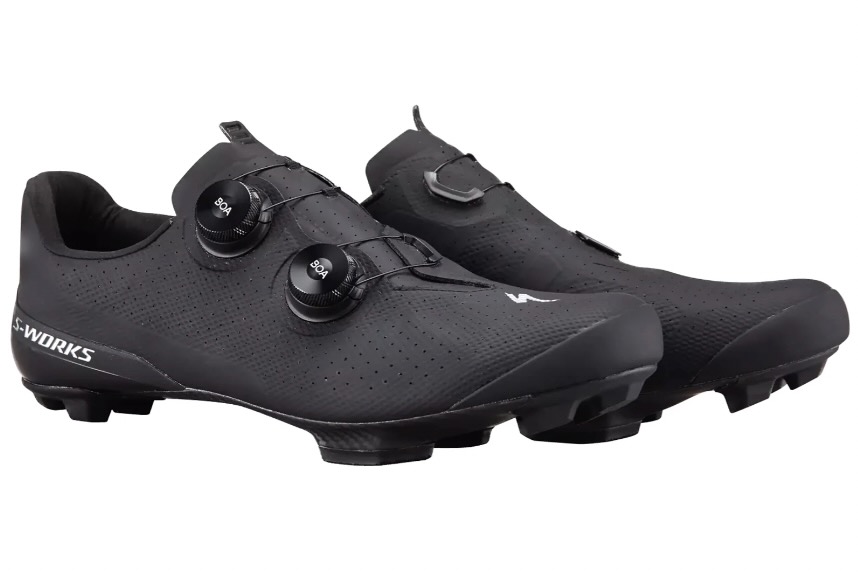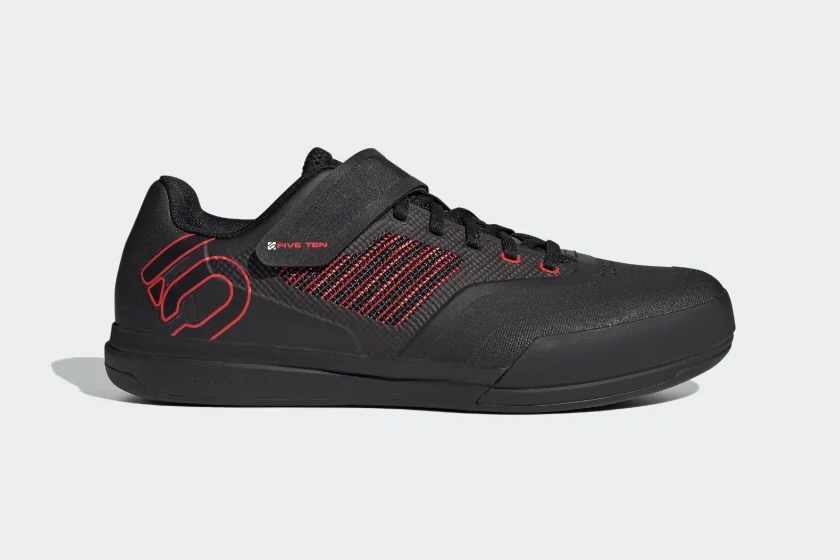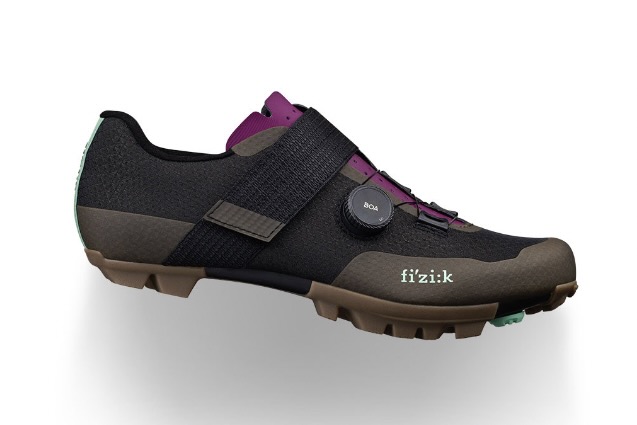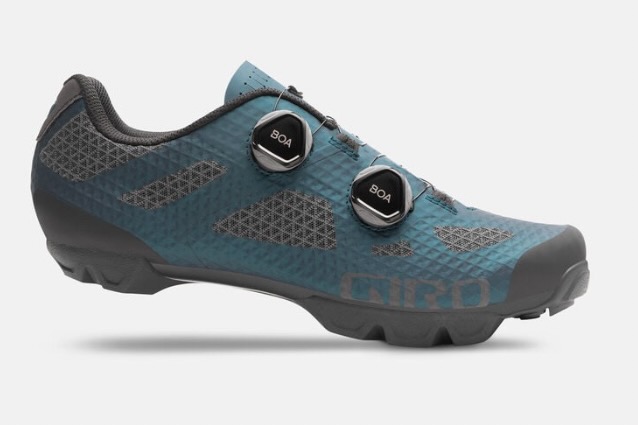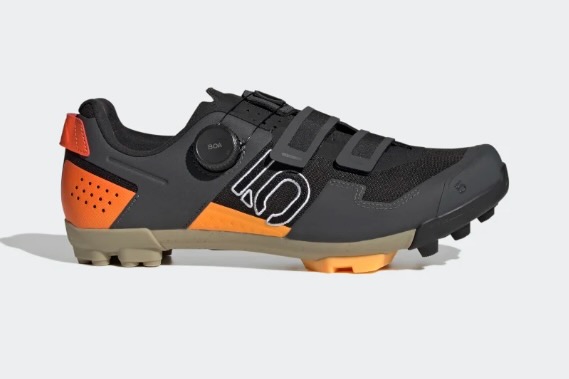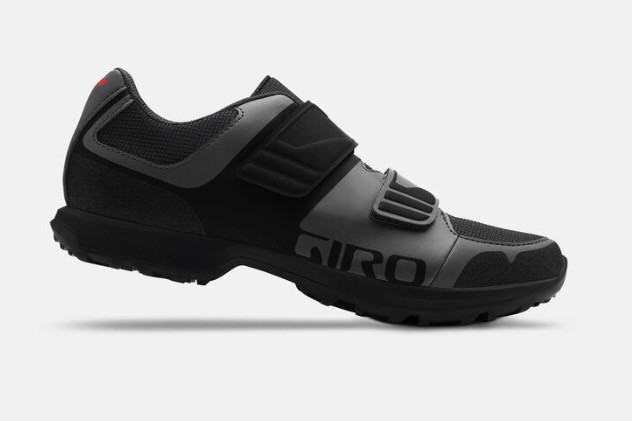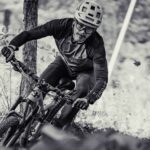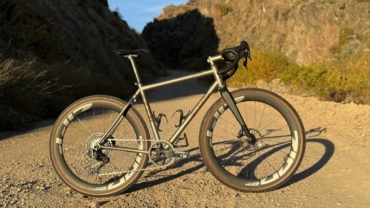As a critical connection between you and your bike, finding the best mountain bike shoes is very important. Good shoes provide stability, control, and protection while delivering power into the pedals and hopefully remaining comfortable in the process.
Different styles of riding have different demands with cross-country, trail, enduro, and gravity riders all seeking varying performance characteristics from their footwear. To help you sort through all the options, we gathered a diverse selection of 17 of the best clipless mountain bike shoes on the market to test and compare.
Over the course of several months, we tested each pair on trail rides, shuttle laps, cross-country loops, and even some long gravel grinds while assessing each model on important factors like comfort, pedaling efficiency, stability, walkability, and foot protection to find the best shoes for each type of rider.
From the top-rated Crankbrothers Mallet Trail BOA to the race-focused Shimano S-Phyre XC9 and the adventure-ready Pearl Izumi X-Alp Summit, you’ll find our favorite clipless mountain bike shoes for all styles of riding below.
Editor’s Note: We updated this guide for bike season on April 24, 2025, with the addition of the budget-friendly Specialized Recon 1 and the exceptionally comfortable Giro Empire SRC.
The Best Mountain Bike Shoes of 2025
Best Mountain Bike Shoes for Adventure Riding and Bike Packing
Pearl Izumi X-Alp Summit
7.5/10 RatingCrankbrothers Mallet Trail BOA
- Weight (pair): 844 g (size 43.5)
- Closure: BOA Li2 dial and upper velcro strap
- Intended use: Trail, enduro
- Available sizes: 5-15 US (half sizes 5.5 – 12.5)
Pros
- Comfortable
- Perfect level of sole stiffness
- Grippy soles work well when hiking
- Ankle gaiter helps keep debris out of shoes
- They look awesome
Cons
- Moderately expensive
- Ripstop upper is harder to keep clean
Specialized 2FO Roost Clip
- Weight (pair): 750 g (43.5)
- Closure: Laces
- Intended use: Trail riding
- Available sizes: 36-49 EU (half sizes 38.5-46.5)
Pros
- Reasonable price
- Lightweight compared to similar shoes
- Versatile
- Good power transfer
- Good walkability
Cons
- Roomy in the forefoot
- Difficult to tighten shoe over forefoot
- Non-reinforced eyelets are susceptible to damage
Shimano S-Phyre XC9
- Weight (pair): 616 g (43.5)
- Closure: Dual BOA Li2 dials
- Intended use: XC, gravel, cyclocross
- Available sizes: 38-48 EU, (half sizes: 40.5-46.5)
Pros
- Excellent pedaling efficiency
- Super lightweight
- Well-ventilated
- Comfortable
- Comes in a wide version
Cons
- Limited foot protection
- Very expensive
- Relatively narrow fit
- Limited vibration damping in sole
Specialized Recon 1
- Weight (pair): 590 g (43 EU)
- Closure: L6 DOA dial w/ Dyneema yarn lace
- Intended use: Cross-country, gravel
- Available sizes: 36 – 49 EU (whole sizes only)
Pros
- Affordable,
- Lightweight
- High-end looks
- Well-ventilated
- Easy on/off and adjustments with BOA
Cons
- Middle of the road stiffness
- No half sizes – they run a little large
- Very limited foot protection
Giro Empire SRC
- Weight (pair): 720 g (43.5 EU)
- Closure: Laces
- Midsole: Carbon composite
- Upper: Teijin Evofiber
- Intended use: Cross-country, gravel
- Available sizes: 39 – 48 EU, half sizes 42.5 – 45.5 EU
Pros
- Super comfortable
- Excellent pedaling efficiency
- Adjustable footbed
- Respectable walkability
- Classic style
Cons
- Expensive
- Minimal ventilation
- Not super light
Fox Union BOA
- Weight (pair): 876 g (9.5 US)
- Closure: Dual BOA dials
- Intended use: Gravity, enduro, aggressive trail
- Available sizes: 37-47 (half sizes 41.5-45.5)
Pros
- Excellent support and lateral stability
- Good level of foot protection
- Reasonable weight for style of shoe
- Weather resistant uppers
- Surprisingly good pedaling efficiency
Cons
- Stiff uppers take a few rides to break in
- Expensive
- Stiff sole doesn't flex much when walking
Pearl Izumi X-Alp Summit
- Weight (pair): 780 g (size 43.5)
- Closure: BOA dial and Velcro strap
- Intended use: Trail riding, adventure riding, bikepacking
- Available sizes: 39-49 EU (whole sizes only)
Pros
- Good blend of on- and off-bike performance
- Grippy Vibram soles for hike-a-bikes
- Stiff enough for most types of non-competitive riding
Cons
- Only available in full EU sizes
- Not the stiffest
- Can feel pedal slightly through sole
More Great Mountain Bike Shoes to Consider
- Weight (pair): 746 g (size 43.5)
- Closure: Laces
- Intended use: XC, light trail, gravel
- Available sizes: 5 – 15 US (half sizes 5.5 – 12.5)
Pros
- Reasonable price
- Classy looks
- Good pedaling efficiency
- Comfortable
- Decent hiking traction for an XC shoe
Cons
- Not as stiff as high-end options
- Limited foot protection
- Weight (pair): 860 g (size 43.5)
- Closure: BOA L6 dial and upper Velcro strap
- Intended use: Trail, enduro, gravity
- Available sizes: 5-14 US (half sizes 5.5-12.5)
Pros
- Super comfortable
- Ample foot protection
- Easy to walk in
- Good power transfer
- Comes with Crankbrothers cleats preinstalled
- Available in Speedlace and Lace versions
Cons
- Ventilation could be better
- Weight (pair): 864 g (size 9.5)
- Closure: Single BOA L6 dial with textile TX4 laces
- Intended Use: Trail
- Available Sizes: 7 – 15 US (half sizes 7.5 – 12.5)
Pros
- Breathable upper
- Grippy sole
- Reasonable price for BOA equipped shoe
- Grippy soles
- Comfy slip-tongue design
- Good looks
Cons
- Low volume fit may not work for everyone
- No water resistance
- Uppers aren't the most supportive
- Weight (pair): 590 g (43.5)
- Closure: Dual BOA dials
- Intended use: XC, gravel
- Available sizes: 36-49 EU (half sizes 38.5-46.5)
Pros
- Incredible power transfer
- Very lightweight
- Slick looks
- Tunable pontoon height/pedal interface
Cons
- Very expensive
- Limited foot protection
- Not great for walking
- Lots of exposed carbon on sole
- Weight (pair): 905 g (10 US)
- Closure: Laces and Velcro strap
- Intended use: Gravity, enduro, aggressive trail
- Available sizes: 4-15 US (half sizes 4.5-12.5)
Pros
- Great power transfer
- Adequate foot protection
- Lighter than previous version
- Reasonable ventilation
Cons
- Soles don't absorb vibration as well as similar shoes
- Reports of sole durability issues
- Stiff sole is a little clunky for walking
- Weight (pair): 662 g (43.5)
- Closure: Large Velcro strap and BOA dial
- Intended use: XC, gravel, cyclocross
- Available sizes: 36-48 EU (half sizes 37.5-46.5)
Pros
- Lightweight
- Stiff; excellent power transfer
- Less expensive than other high-end XC shoes
- Rubber sole tread covers most of the carbon midsole
- Well-ventilated
Cons
- Still fairly expensive
- Minimal foot protection
- Limited padding in heel and on tongue could cause discomfort for those with sensitive feet
- Weight (pair): 708 g (43.5)
- Closure: Dual BOA dials
- Intended use: Light trail, XC, gravel
- Available sizes: 39-50 EU (half sizes 42.5-45.5)
Pros
- Breathable Synchwire upper
- Good power transfer
- Easily adjustable
- Less expensive than high-end XC shoes
Cons
- Slightly heavier than more expensive models
- Not as stiff as top-ranked XC shoes
- Limited foot protection
- Weight (pair): 724 g (9.5 US)
- Closure: BOA dial and 2 Velcro straps
- Intended use: XC, trail, gravel
- Available sizes: 6-14 US (half sizes 6.5-12.5)
Pros
- Great power transfer
- More protective than typical XC shoes
- Sole lugs provide good walking traction
- Less expensive than many XC shoes
Cons
- Higher volume fit in forefoot; may be roomy for narrow feet
- Slightly heavier than other XC-style shoes
- Weight (pair): 758 g (43.5)
- Closure: Single BOA dial
- Intended use: trail riding, gravel
- Available sizes: 36-48 EU (half sizes 37.5-46.5)
Pros
- Comfortable
- Supple uppers conform nicely to the feet
- Good off the bike traction
- Pretty good ventilation
Cons
- Not the best power transfer
- Uppers aren't the most supportive
- Weight (pair): 910 g (44)
- Closure: 2 Velcro straps
- Intended use: General trail riding
- Available sizes: 39-50 EU (whole sizes only)
Pros
- Very reasonable price
- Comfortable
- Relatively casual style
- Decent power transfer
- Easy to walk in
Cons
- Heavier weight
- Not the best power transfer
- No half sizes
Mountain Bike Shoes Comparison Chart
| Mountain Bike Shoe | Price | Weight (pair) | Closure | Intended Use |
|---|---|---|---|---|
| Crankbrothers Mallet Trail BOA | $220 | 844 g (size 43.5) | BOA dial and Velcro strap | Trail, enduro |
| Specialized 2FO Roost Clip | $130 | 750 g (size 43.5) | Laces | Trail |
| Shimano S-Phyre XC9 | $450 | 616 g (size 43.5) | Dual BOA dials | XC, gravel |
| Specialized Recon 1 | $120 | 590 g (size 43) | BOA L6 dial with Dyneema yarn lace | XC, gravel |
| Giro Empire SRC | $350 | 720 g (size 43.5) | Laces | XC, light trail, gravel |
| Fox Union BOA | $250 | 860 g (size 9.5 U.S.) | Dual BOA dials | Trail, enduro, gravity |
| Pearl Izumi X-Alp Summit | $150 | 780 g (size 44) | BOA dial and Velcro strap | Trail, adventure, bike packing |
| Crankbrothers Candy Lace | $160 | 746 g (size 43.5) | Laces | XC, light trail, gravel |
| Crankbrothers Mallet BOA | $200 | 864 g (size 9.5 U.S.) | BOA dial and Velcro strap | Trail, enduro, gravity |
| Ride Concepts Accomplice Clip BOA | $150 | 905 g (size 10 U.S.) | BOA dial with TX4 laces | Trail |
| Specialized S-Works Recon | $450 | 590 g (size 43.5) | Dual BOA dials | XC, gravel |
| Five Ten Hellcat Pro | $180 | 724 g (size 9.5 U.S.) | Laces and Velcro strap | Trail, enduro, gravity |
| Fizik Vento Ferox Carbon | $300 | 662 g (size 43.5) | BOA dial and Velcro strap | XC, gravel |
| Giro Sector | $240 | 708 g (size 43.5) | Dual BOA dials | XC, light trail, gravel |
| Five Ten Kestrel BOA | $230 | 724 g (size 9.5 US) | BOA dial and dual Velcro straps | XC, down-country, trail |
| Fizik Terra Atlas | $160 | 758 g (size 43.5) | BOA dial | XC, light trail, gravel |
| Giro Berm | $80 | 910 g (size 44) | Dual Velcro straps | General trail riding |

How We Tested the Best Mountain Bike Shoes
Our cycling editors have been reporting on the latest news, technologies, and products across the spectrum of riding disciplines. Writing about bikes isn’t just a job. It’s our passion, and we love trying out new and interesting products of all kinds for reviews and finding the best options to enhance our experience, enjoyment, and performance out on the trails.
Our mountain bike shoe review author, Jeremy Benson, has been professionally testing and reviewing mountain bike gear for the past 8 years and has tested over 30 different pairs of clipless mountain bike shoes in that time. Having started mountain biking in the early 1990s, he’s witnessed and experienced the evolution of clipless mountain bike shoes firsthand.
From gravel and XC racing, all-day backcountry epics, and shuttle runs on steep skidders, he appreciates all types of riding and understands the needs of different riders and riding styles. His extensive testing experience has also resulted in a keen ability to discern the performance differences in the products he uses. In addition to mountain bike shoes, Jeremy has tested and reviewed the best mountain bike helmets to keep your head safe and the best hitch bike racks for transporting your precious rides.
Based in Lake Tahoe, Calif., Jeremy has hundreds of miles of world-class trails right out the door or a short drive from his home. From smooth and fast cross-country loops, machine-built flow trails, grueling climbs, and steep, technical descents, there’s a little bit of everything to put these shoes to the test. In the winter months, trail systems in the California foothills or the high desert of Nevada provide a respite from the snowy mountains and the ability to test shoes year-round.
After researching the best mountain bike shoes on the market, we rounded up a diverse selection of 17 models to test and compare side by side. Each pair was thoroughly tested over the course of several months (some models for well over a year) to determine their strengths and weaknesses and how they perform in the real world.
Each pair was weighed for consistency and comparison to the manufacturer’s claims, and important performance characteristics like fit, comfort, ventilation, pedaling efficiency, foot protection, and walkability were scrutinized out on the trail.
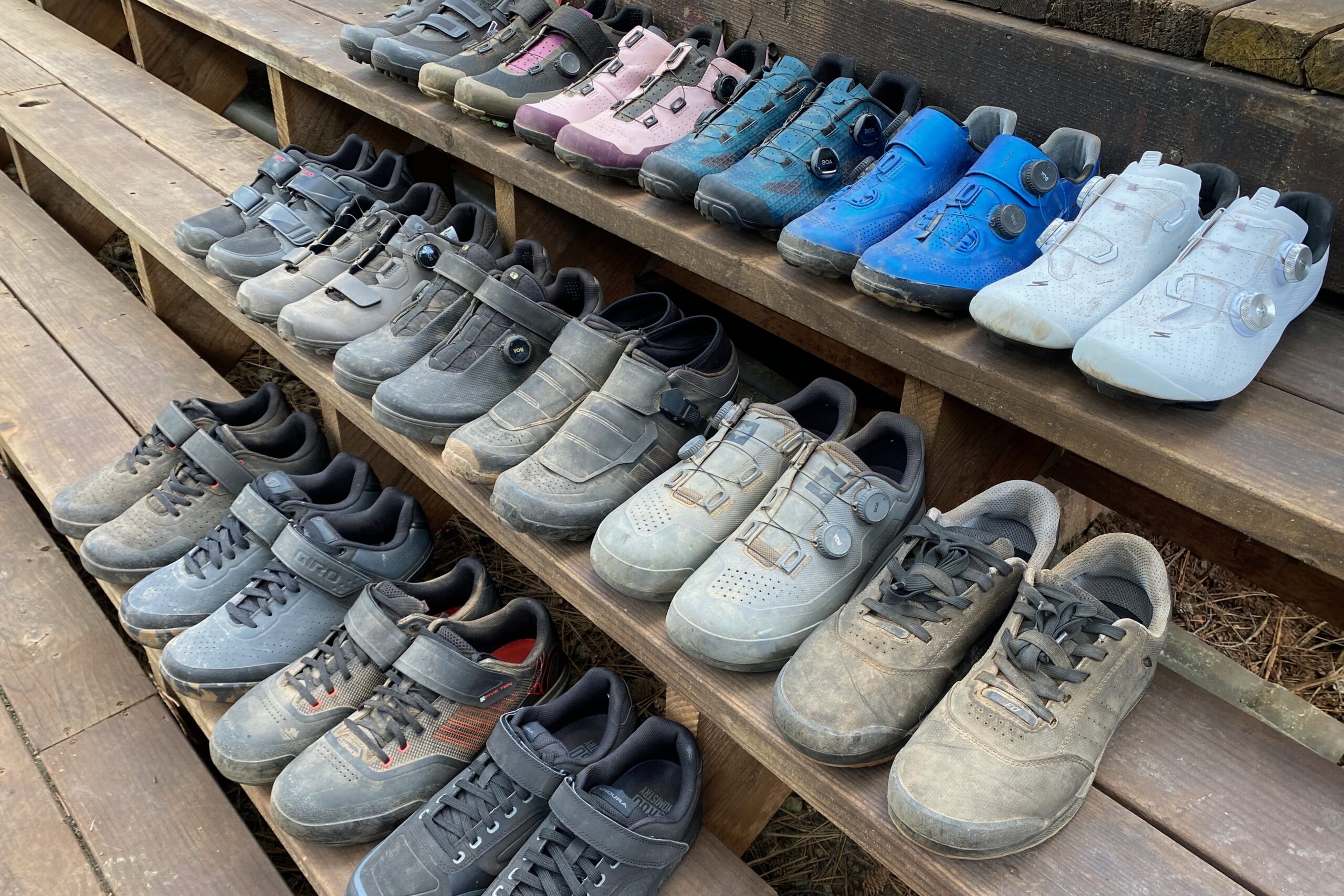
Buyer’s Guide: How to Choose the Best Mountain Bike Shoes
With so many different models to choose from, finding the best pair of mountain bike shoes to meet your needs can be a challenge. We put together this buying advice that goes over the factors to consider when making your purchase decision. Please note that this review and the information below are specific to clipless mountain bike shoes, which are shoes that accept cleats that clip into the pedals (confusing, we know).
Flat pedal riders fear not — we have tested the best flat pedals and the best flat pedal shoes if you prefer not to clip in. For the roadies, we have a comprehensive road bike shoe review as well. For those who split the difference, we’ve tested and reviewed the best gravel bike shoes, too.
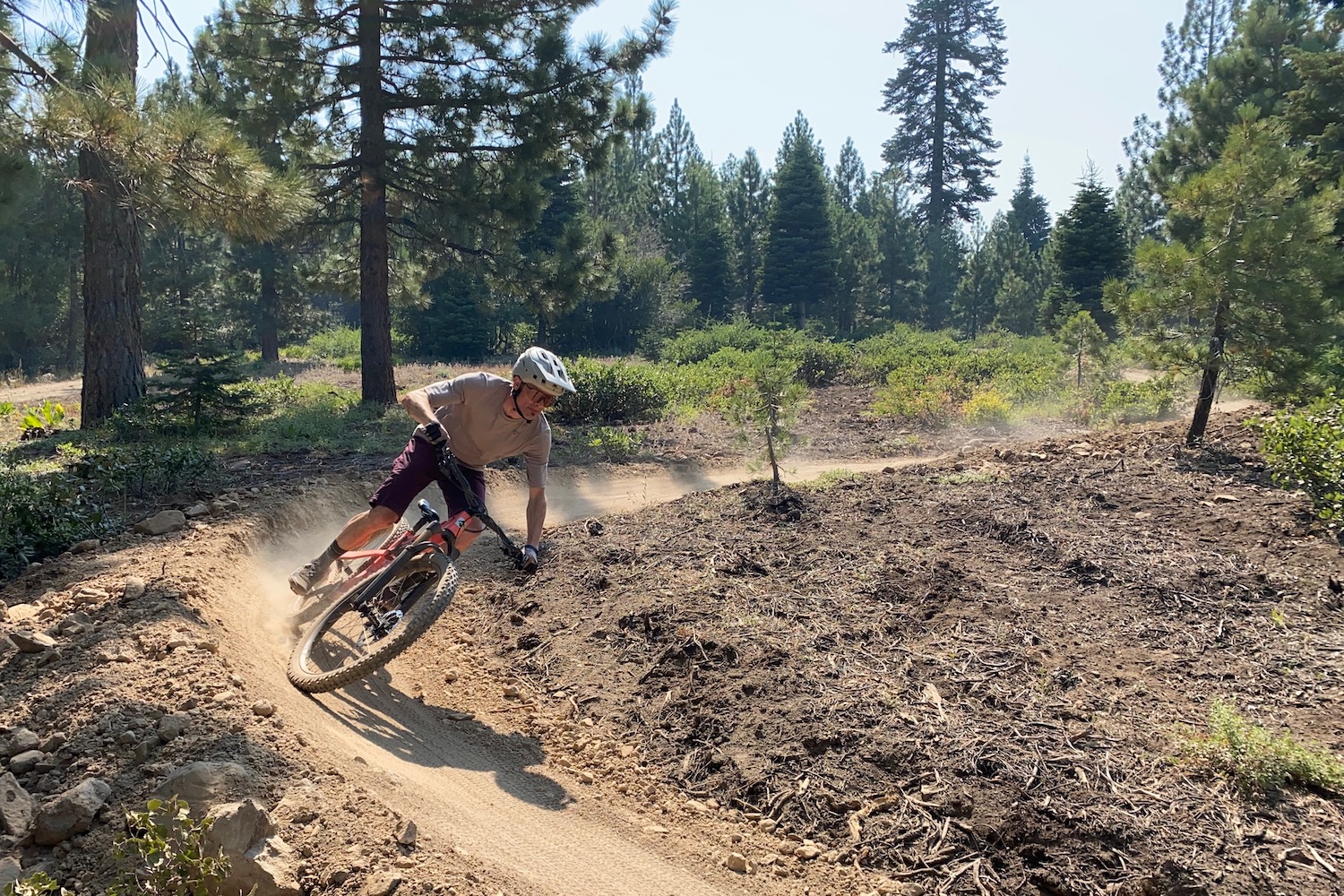
What Type of Riding Do You Do?
The type of riding you do will be the primary factor to consider when choosing the right pair of mountain bike shoes. If the majority of your riding falls into a specific category like cross-country or gravity, shoes designed for that specific purpose will serve you the best.
If you’re more of a generalist, then a versatile trail-riding shoe is probably the way to go. If you dabble in multiple disciplines, having multiple different pairs of shoes to match the type of riding you’re doing is not uncommon.
Types of Mountain Bike Shoes
Given the various categories that mountain biking is divided into, it comes as little surprise that we have shoes specialized to meet the varying needs of riders and riding styles. In general, mountain biking can be broken into three primary categories: cross-country, trail/all-mountain, and gravity (downhill and enduro). We explain the primary differences in design and performance between the types of shoes below.

Cross-Country Shoes
While it is possible to ride cross-country in just about any mountain bike shoe, cross-country-specific shoes are the preferred tool for the job for several reasons. XC riding is about speed and efficiency, so cross-country shoes are designed with low weight and efficient power transfer as priorities. This is particularly true in XC racing, where high-end shoes can provide marginal gains that can be the difference between a podium or a mid-pack performance.
Cross-country shoes typically have stiff soles, sometimes made from carbon fiber or rigid plastic, that provide a direct transfer of power into the pedals with little to no energy wasted through sole flex. They also typically have sleek, low-profile uppers that provide a snug and secure fit. Given the stiffness and support of the soles, this style of shoe works well with small, lightweight pedals that don’t have any platform or cage.
Given the prioritization of weight and sole stiffness in the design of cross-country shoes, they do make some compromises in other areas. They generally provide much less protection for the feet compared to trail or gravity-oriented models.
Stiff soles also don’t tend to provide much in the way of vibration damping, so they can be a little harsher on the feet over rough terrain and long descents. Walking and hiking also tend to be less natural and comfortable, given the stiffness of the soles and the outsole designs.
Regardless, if moving fast uphill and across the flats is your goal, cross-country shoes are generally the best bet. Often, this style of shoe also works great for gravel riding and/or road biking. Examples of cross-country shoes include the Shimano S-Phyre XC9, the Specialized S-Works Recon, the Fizik Vento Ferox Carbon, and the Giro Sector.
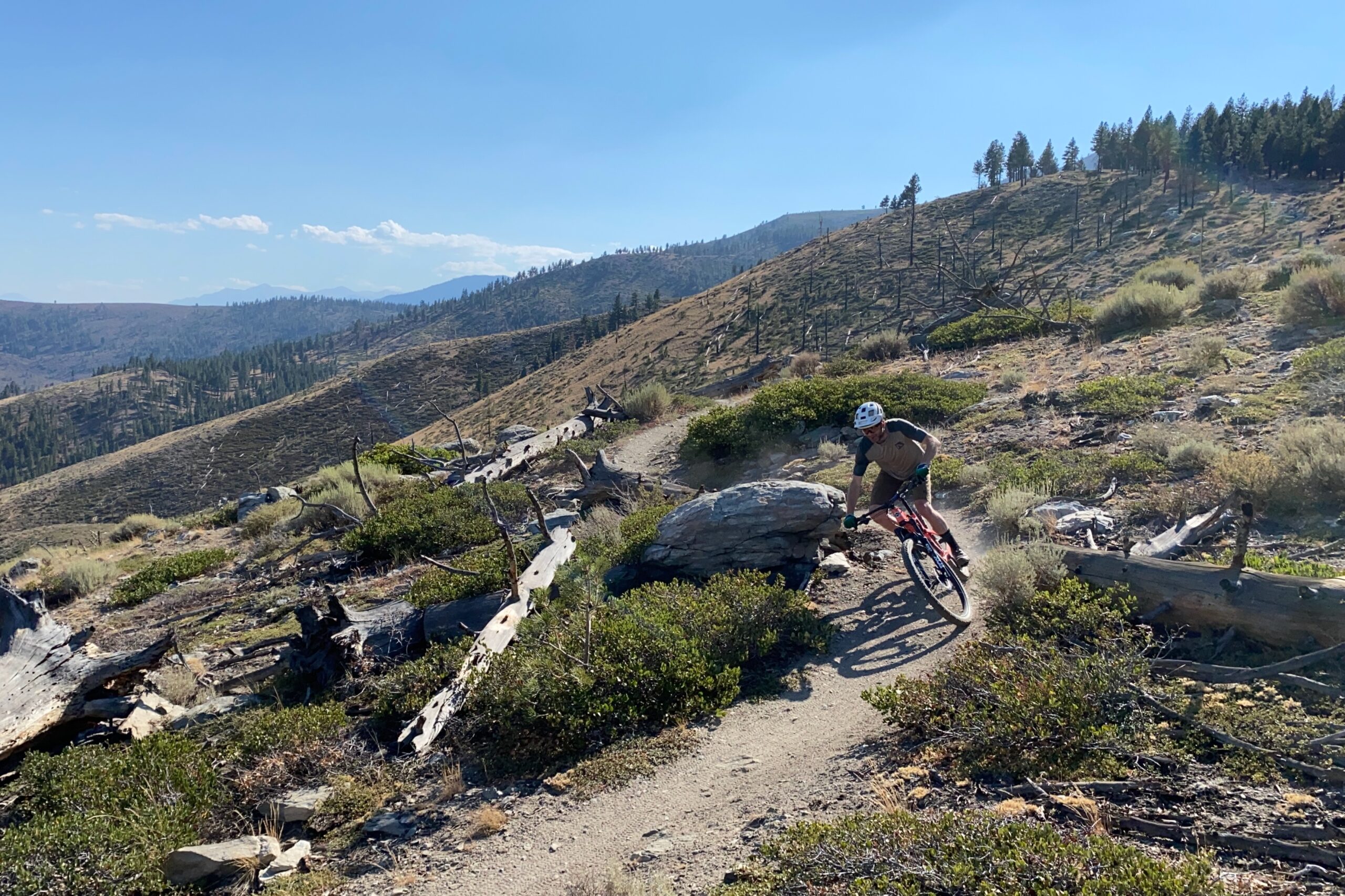
Trail and All-Mountain Shoes
Shoes designed for trail riding are the happy medium between the stiff, efficiency-oriented cross-country models and the protective gravity-focused options. Trail shoes tend to be highly versatile and span the largest range of riding styles and uses. Most are still reasonably lightweight and provide efficient power transfer, though it is not the singular focus like with cross-country shoes.
Trail shoes also typically provide a higher level of foot protection, but not quite as much as downhill shoes. Outsole designs vary, but most now feature grippy rubber soles with flex through the toe to facilitate more natural walking and traction for those inevitable hike-a-bikes.
Shoes like these that can do it all inevitably make some minor compromises. They aren’t quite stiff or light enough to be the best option for cross-country racing. Likewise, they don’t provide the level of foot protection most riders seek for true downhill riding. Still, trail riding shoes like the Specialized 2FO Roost Clip are typically the best option for the vast majority of riders.
Other models like the Crankbrothers Mallet Trail BOA provide enough foot protection for enduro riding and even downhill, yet they are versatile enough to be great trail riding shoes as well.
Enduro Shoes
Enduro-style riding and racing is essentially a gravity-focused discipline, and the preferred shoes for this type of riding are often those designed for gravity riding. Still, with timed downhill stages and untimed uphill transfers, enduro riders do enough pedaling that efficiency is often still a consideration. For this reason, beefier and more protective trail/all-mountain shoes are often a good choice, and the new breed of moderate-weight gravity shoes are typically solid options for this type of riding.

Gravity Shoes
Gravity riders who spend their days riding chairlifts or shuttling the uphills to ride rough and steep trails or hit massive jumps typically seek shoes that provide more foot protection and somewhat more forgiving sole designs. Gravity shoes tend to be a bit bulkier, with more cushioning in the uppers and protective zones integrated around the toes, heels, and sometimes the ankles.
With less emphasis on efficiency, the soles are generally not as stiff, and they usually incorporate some vibration-dampening material like EVA foam into the midsole to absorb some trail feedback and impact. These features typically result in shoes that are a bit heavier, though that is a tradeoff for the protection and comfort they provide.
Of course, gravity shoes can be worn for everyday trail riding, though they may be overkill in many situations. Still, trail riders seeking added foot protection and cushioning often opt for this style of shoe, particularly if their riding leans toward the more aggressive side of the spectrum and they don’t mind a little extra weight in exchange.
Many of the latest gravity shoes, like the Fox Union BOA, Crankbrothers Mallet BOA, and Five Ten Hellcat Pro, are lighter and less bulky than older models, expanding their versatility and making them viable options for trail riding as well.

Pedals
Much like your shoes, clipless pedals come in a variety of styles that may provide distinct performance advantages for certain types of riding. The clip mechanisms themselves vary somewhat between brands, although the general idea is the same. Clipping into your pedals secures the foot to the pedal in the optimal position. The optimal position varies by personal preference, but also by use case.
Typically, XC riders have a slightly more forward cleat position to optimize pedaling efficiency, while most gravity riders have a rearward-biased cleat position to enhance stability when descending. Thankfully, most shoes have a relatively wide cleat adjustment range, so most people will be able to position their cleats in their desired location.
Among mountain bike pedals, the Shimano SPD system and cleat are generally the most common. Other brands like Crankbrothers, Time, HT, Hope, etc., use proprietary cleats for their pedals, but they all share the same two-bolt attachment. There are few actual “standards” in the bike industry, but the two-bolt cleat interface for mountain bike shoes is one that is actually a standard. Phew.
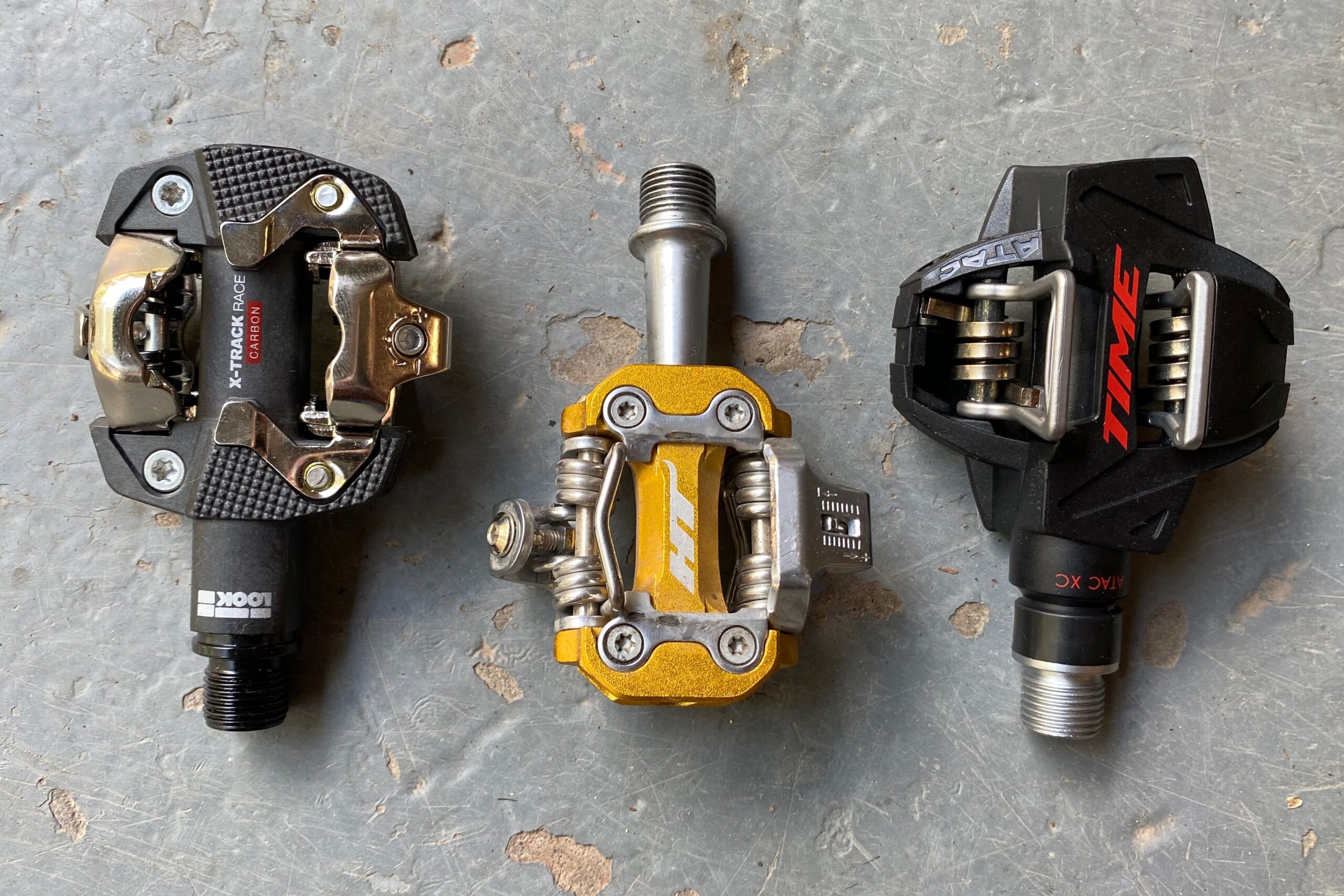
XC Pedals
Pedals for cross-country riding are designed to be used with stiff-soled cross-country shoes. They typically consist of a spindle and a small pedal body that is essentially just the clip mechanism, often with a small platform to either side for some lateral support.
They usually prioritize light weight, and the majority of the support comes from the stiff sole of your shoes. Examples include models like Crankbrothers Eggbeaters, HT M2, Time XC 8, and Shimano XTR PD-M9100.
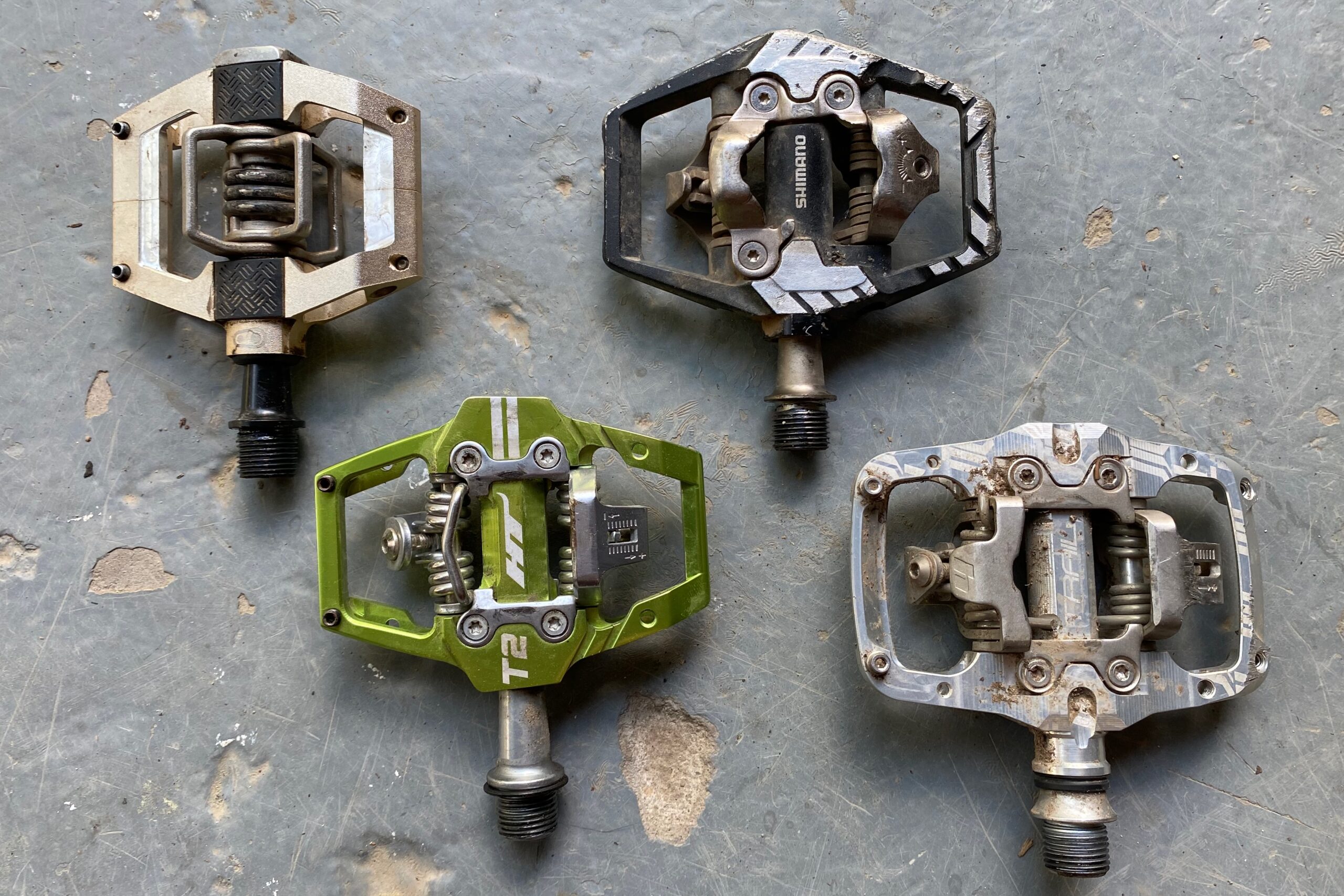
Trail Pedals
Trail pedals typically have a small to mid-size cage that surrounds the clip mechanism. Designs vary, but typically, the cage is intended to provide a little additional support when clipped in or something to stand on if you happen to clip out. The larger pedal body is also helpful for finding and orienting the pedal beneath your foot when clipping in.
Some designs feature traction pins that can add grip when used with certain shoes. Examples of trail pedals are the Shimano XT Trail, Crankbrothers Mallet Trail, HT T2, Time Speciale 8, and other similar models.
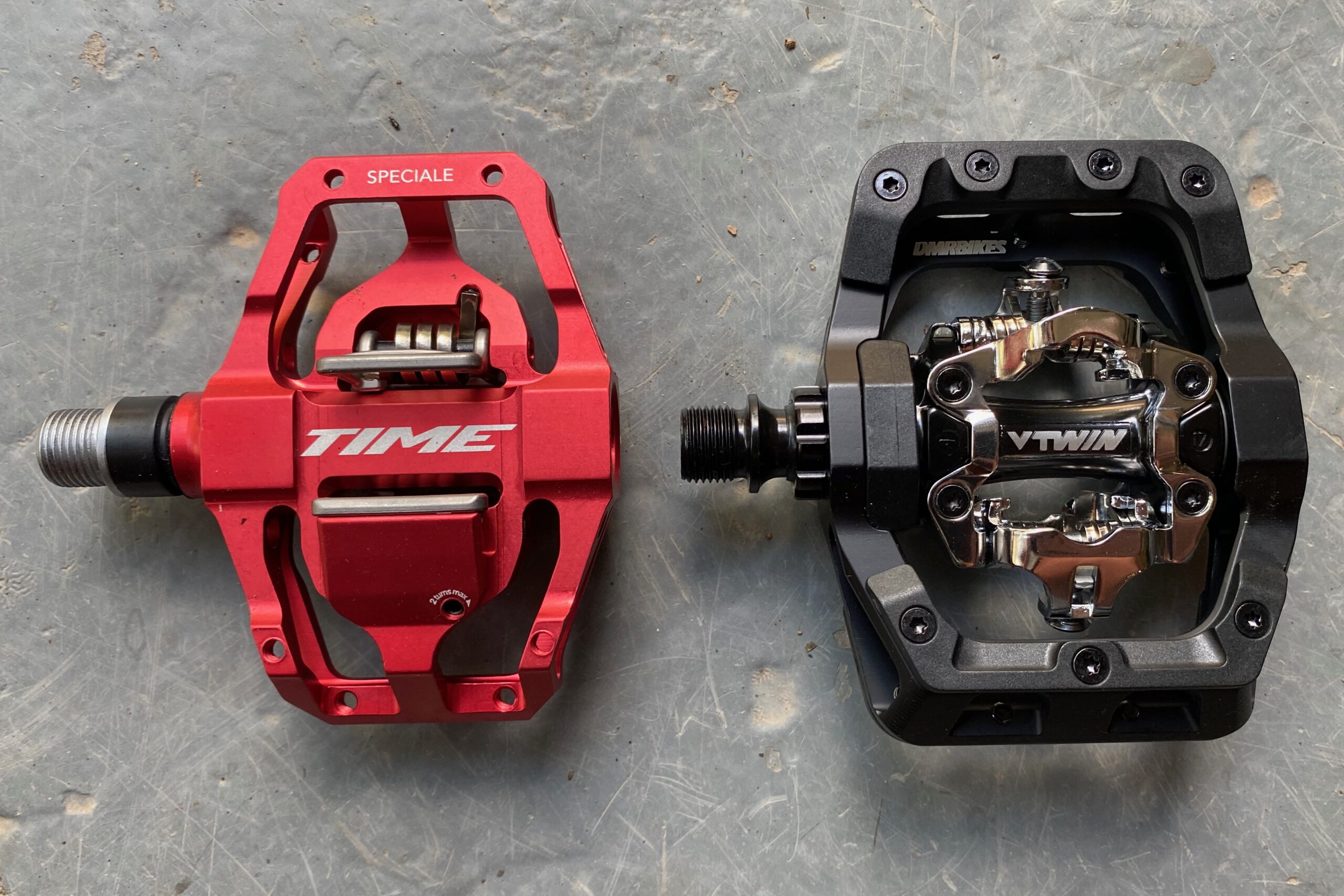
Gravity Pedals
Downhill riders typically opt for pedals that have a large platform surrounding the clip mechanism. The larger platform helps provide support for the comparatively softer-soled gravity shoes, both fore and aft, and side to side. The added support is critical and provides extra control when piloting your bike through rough terrain at high speeds.
These pedals often resemble a flat pedal with a clip mechanism in the center, and they often have traction pins for added grip. Examples of gravity pedals include the Time Speciale 12, Shimano Saint, DMR V-Twin, and Crankbrothers Mallet DH.
Getting the Right Fit
Finding the right type of shoe to suit your needs and riding style is very important, but finding the right fit will enhance your control and ensure your comfort on the bike. Too loose and your feet can move around, resulting in a reduction of control, while shoes that are too tight can cause discomfort, hot spots, and even numb feet. Properly fitting shoes should be the appropriate length, width, and volume, with closures that wrap the feet snugly and securely.

Sizing
Getting the right size is the important first step. Like any other type of shoes, mountain bike shoes come in a range of sizes that are typically listed in EU, U.S., and U.K. sizes. If you are unsure of your size, you can get your feet measured at most bike shops or you can do it at home (it’s easy to find helpful tips for measuring your feet online). If you have mountain bike shoes that fit well, it’s often as easy as checking the size and ordering the same thing, especially if it is the same brand.
This doesn’t always hold true, however, as there is some variance between brands and how their EU and US/UK sizes line up on the size chart. Whenever possible, we recommend trying shoes on before you buy to ensure they fit correctly. When trying shoes on, it’s also important to wear the socks you’ll be riding in, as sock thickness can directly impact how a shoe fits.
Width and Volume
Width and volume are also important considerations that can make or break the fit of a shoe. Most shoes come in a “regular” width that is intended to fit the majority of people whose feet are neither very wide nor very skinny. For this reason, people with average-width feet generally have the easiest time finding shoes that fit them properly in terms of width and volume. In general, cross-country shoes tend to have slightly narrower and lower-volume fits.
Thankfully, some brands offer wide or high-volume versions to accommodate those with wider feet. Trail and gravity shoes vary in terms of width, but generally speaking, they typically have a little more room in the forefoot than the snugger-fitting cross-country models. It is also worth noting that most shoes will break in slightly over time as the uppers conform to your feet. Some shoes that feel too tight out of the box may end up being the perfect fit after a few rides.
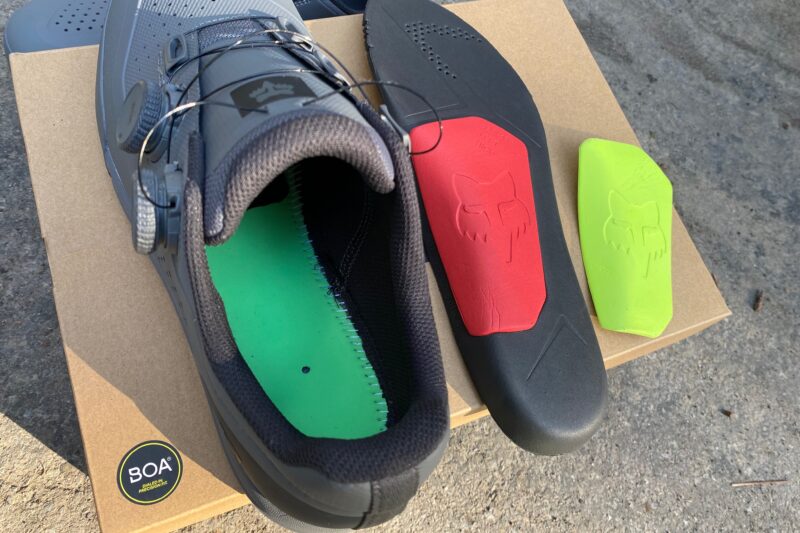
Arch Support
People’s arches are not all the same, so arch support may be an important consideration for some people. Typically, people who pedal hard and put in long miles want to ensure their feet and lower legs stay in the optimal alignment for long-term comfort and transferring power. Those with high arches also benefit from having an insole that provides adequate support.
Some shoes, typically high-end cross-country shoes, come with insoles that have adjustable arch support. The majority of mountain bike shoes, however, tend to come with relatively basic insoles. Those with specific arch support needs and wants can often benefit from the use of aftermarket or custom insoles.

Pedaling Efficiency
Mountain bike shoes are our connection to the pedals and how our pedaling power gets transferred into forward motion. The stiffness of a shoe’s sole is a major factor that dictates how efficiently your power is transferred, and they vary pretty significantly based on materials used and intended use.
Pedaling efficiency is prioritized most by cross-country riders, particularly racers, who aim to maximize their effort, so XC shoes typically have the stiffest soles, often constructed from carbon fiber or rigid plastic. These soles flex very little, if at all, and tend to be a little less forgiving and more difficult to walk in.
Price and sole stiffness often go hand in hand, with stiff, race-oriented models often employing carbon fiber in their soles and commanding a lofty price tag. It isn’t just the sole’s stiffness, however, as a precise fit is equally important to keep the foot from moving around to maximize efficiency throughout the whole pedal stroke.
Shoes designed for trail riding typically have a more balanced sole that is stiff enough for efficiency during long days in the saddle but have some forgiveness in the design to enhance rider comfort and walkability. Trail shoes often employ stiffening plates, or shanks, in the soles that often run about 3/4 of the length of the shoe, providing structure from about the ball of the foot back to the heel.
This provides support underfoot when descending and pushing on the pedals while leaving the sole under the toes and forefoot somewhat flexible for walking. Gravity-oriented shoes often employ similar designs, although some are intended to have a little more flex and forgiveness. They also typically have additional vibration-dampening materials built into the midsoles to absorb more trail feedback.
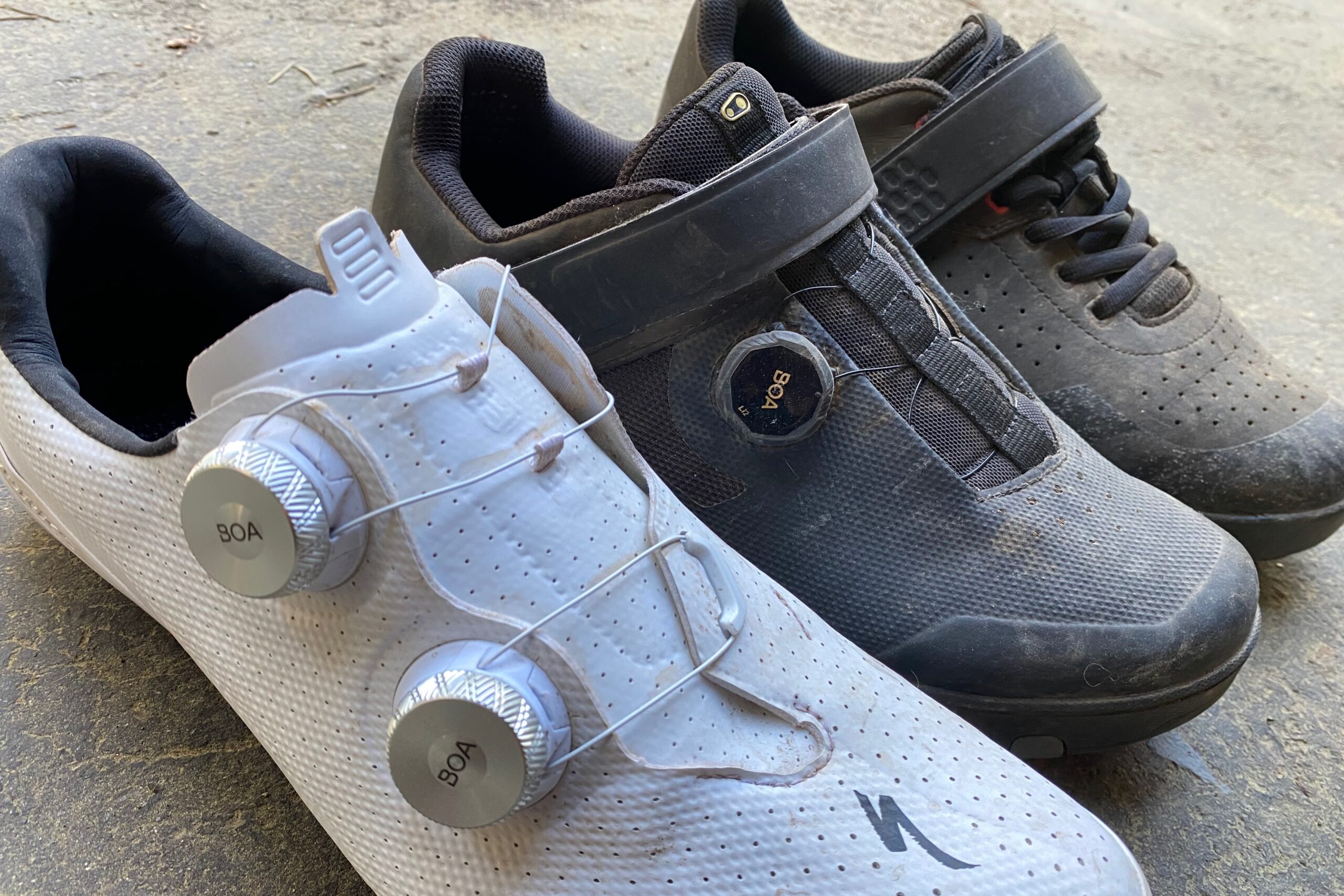
Closures
In addition to getting the right fit, having the shoe be snug and secure around your foot is important for comfort, control, and stability. Shoe manufacturers use a number of different methods for tightening the shoe around your foot, including laces, Velcro straps, ratcheting buckles, BOA dials, and sometimes a combination of two closure types.
Personal preference often dictates what someone chooses, and some shoes are even offered in multiple closure options. For example, the Crankbrothers Mallet shoes come in BOA, Speed Lace, and Lace versions, with the primary difference being price. It stands to reason that the fancier closure systems tend to add a little to the overall price of a pair of shoes.
Price isn’t the only difference, however, and each closure style has some benefits and drawbacks. Laces are the simplest option, and they are cheap and easy to replace. They pull tension evenly over the top of the foot, but they are slower to put on/take off, and they can’t be adjusted on the fly. Velcro straps are often used on their own or in combination with laces, BOAs, or ratchets, either down by the toes or up at the top of the tongue.
Velcro is quick and easy to adjust, but it does tend to wear out more quickly than other closures. BOA dials are typically found on more expensive shoes, and they tighten small wires over the top of the foot. BOA dials are lightweight and very easy to adjust, even while riding, but they can be more prone to damage from impact than other styles of closures.
Ratchet straps are less common than they used to be, but they are still used on some models of shoes. Ratchet straps use a small plastic ladder strap and a ratcheting buckle to add tension over the foot.
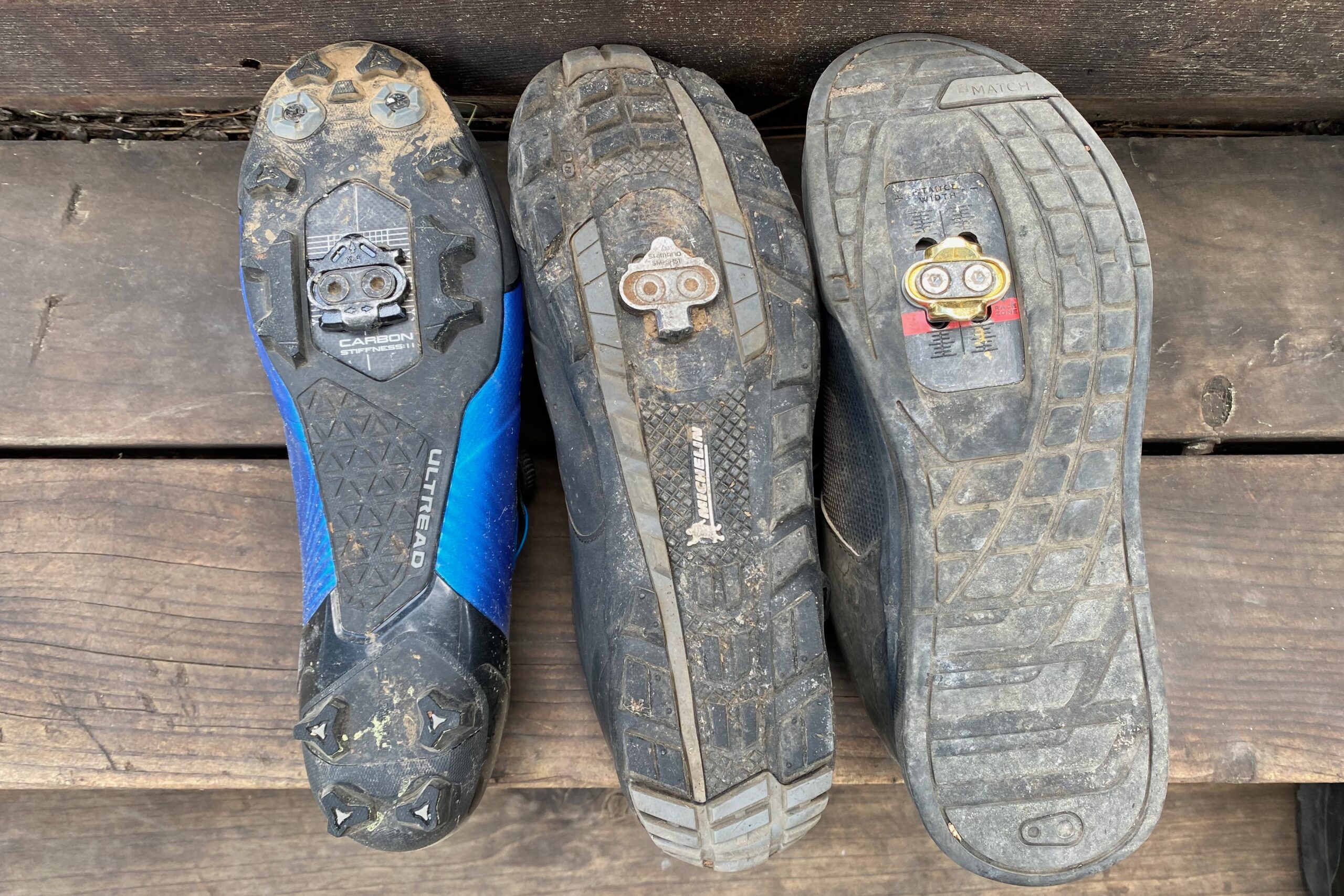
Outsole Design
Outsole designs vary wildly between different models and styles of shoes and play a direct role in how easy it is to walk in some shoes and the traction they provide. Given that we’re discussing shoes designed to clip into your pedals, sole grip isn’t nearly as important as it is for flat pedal shoes, where you rely on the sole for your connection to the pedal pins.
That said, those who ride trails that require dismounting for challenging sections or who hike a bike frequently will want to consider that when choosing a pair of mountain bike shoes.
Cross-country shoes tend to have stiff carbon or plastic soles, and they typically have some rubber tread lugs added to the toe, heel, and on both sides of the cleat mount area. These tread lugs add some lateral stability on the pedal, grip when walking, and protect the rigid soles slightly from damage. Many cross-country shoes can also have toe spikes added, which is common in cyclocross racing for added grip on muddy courses.
Modern trail and gravity shoes usually have full-coverage soles made from various rubber compounds. These tend to cover the entire sole of the shoe from toe to heel, with only the cleat mount area left exposed. The tread designs vary from brand to brand, but most intend for the sole to provide grip on varying surfaces.
The cleat sits in a recess in the sole, and good designs allow for the outsole on the sides of the cleats to interface with the pedal body for lateral stability. Some trail riding shoes are designed for adventurous riding that includes pushing your bike up steep slopes, and these often feature lugged tread designs more akin to a hiking shoe’s sole.
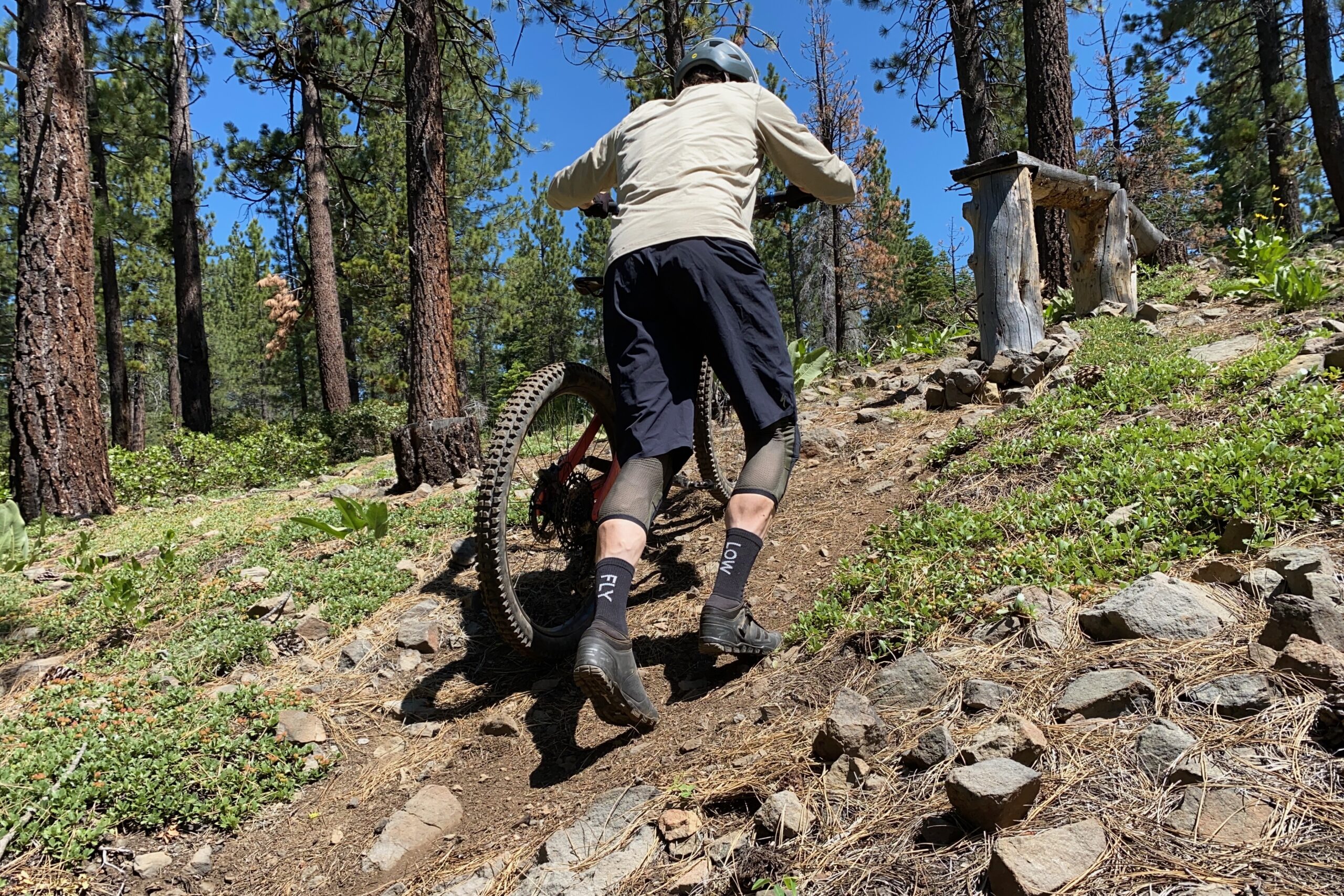
Walkability
Depending on the type of riding you do, a shoe’s walkability may or may not be a concern. If your rides tend to be on mellower terrain, where you stay on the bike the majority of the time, it likely doesn’t matter much how easy your shoes are to walk in. If you ride more adventurous terrain or like to scramble up to every viewpoint along the ride, then a shoe that performs reasonably well off the bike might be of greater importance.
It stands to reason that shoes with more flexible soles and rubber in the outsole design will be easier to walk in and provide more traction on rock and variable surfaces. Most modern trail and gravity shoes work well in this regard, with a select few having particular emphasis on off-the-bike traction in their sole’s design.
Cross-country shoes tend to be the least pleasant to walk in, given their stiff soles that inhibit a natural gait. Most have a slight bit of rocker through the toe, along with raised rubber sole lugs for some grip, but they are not usually the optimal choice for those who dismount their bikes or hike-a-bike frequently.

Foot Protection
The protection of one’s feet while riding varies in importance between the different riding styles, although nearly all mountain bike shoes provide some level of foot protection in their designs. Even thin, lightweight cross-country shoes have firm heel cups and small bumpers surrounding the front of the toes, but their prioritization of weight savings typically results in shoes that provide little additional foot protection. For this reason, they are best suited to less technical terrain, where the likelihood of rock strikes and other impacts to the feet is generally lower.
Trail shoes typically offer more protection than XC shoes with thicker uppers and strategically placed padding or rigid materials to protect the feet in more varied terrain. They also generally have more cushioning integrated into the midsoles for vibration absorption on rough trails.
Gravity shoes like the Giro Chamber II or the Fox Union BOA tend to offer the highest levels of foot protection with rigid toe caps, extra cushioning, and sometimes additional materials like D30 patches for added impact protection in key areas. Extra foot protection tends to add weight, and gravity shoes are generally heavier and bulkier than other styles of shoes as a result.
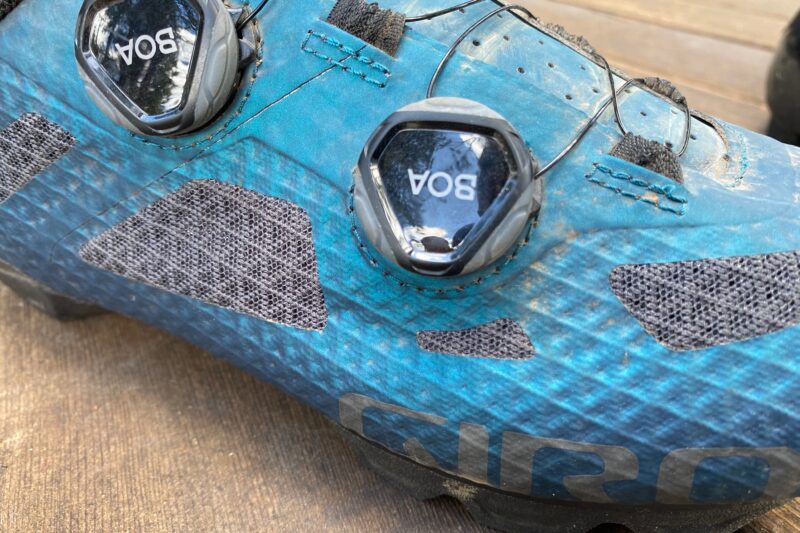
Breathability
Shoe manufacturers approach breathability and ventilation in various ways, with nearly all mountain bike shoes having some sort of way for air to enter or escape in their designs. How effectively these designs work varies significantly, and how important this is to you depends on several factors, of course, like the climate where you live and ride, what type of riding you do, and how much you sweat.
Ventilating features include mesh panels, perforations in the uppers, or uppers constructed from air-permeable materials. Not surprisingly, lightweight XC shoes designed for high-intensity riding typically do well here thanks to thinner uppers and less bulk in their designs. The Giro Sector, for example, is one of the best-ventilated shoes we tested, thanks to its airy Synchwire material.
Trail and gravity shoes, generally speaking, tend to be a little warmer on the feet due to the thicker materials and additional cushioning and protection they provide. This tends to be least important for gravity riders where the majority of your time is spent riding downhill instead of pedaling up it. Still, most models attempt to ventilate the feet, though the effectiveness of their designs varies.
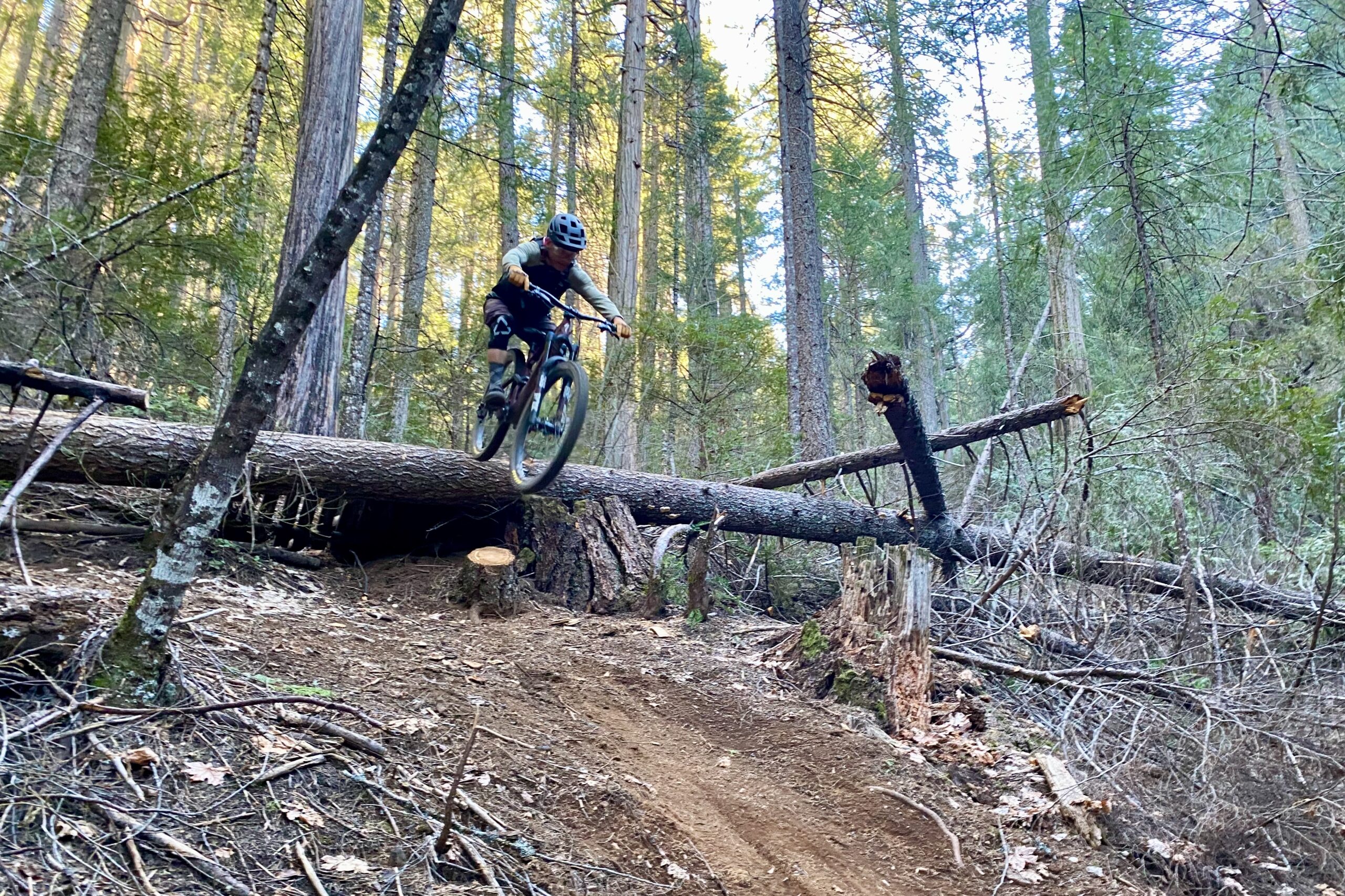
Durability
Like anything else in mountain biking, your shoes take a beating, and they wear out over time. People who ride every day or are particularly hard on gear may easily go through a pair of shoes in a season from regular use. Less frequent riders should expect to get several seasons of use from a quality pair of shoes.
Of course, there are a number of factors that will play a role in how long your bike shoes last. Terrain, weather, and even your skills make a difference and will dictate the lifespan of your footwear. Awkward dismounts, repeated scrapes against sharp rocks, or constantly being wet can result in damage to your uppers, while excessive walking on sharp rocks may result in the premature breakdown of your soles. Sometimes, manufacturing defects will result in sole delamination or other issues (most brands warranty shoes with defects).
In general, lighter, thinner shoes tend to be the most susceptible to damage and can wear out most easily if not treated with care. Beefier, burlier shoes often have extra materials in high-wear areas to protect from abrasion. Velcro tends to wear out faster than other closure types, and it can’t really be replaced. Laces can tear or break, but they are affordable and easy to replace. BOA dials have a checkered past from a durability standpoint, though they can often be replaced and are sometimes covered by warranty.
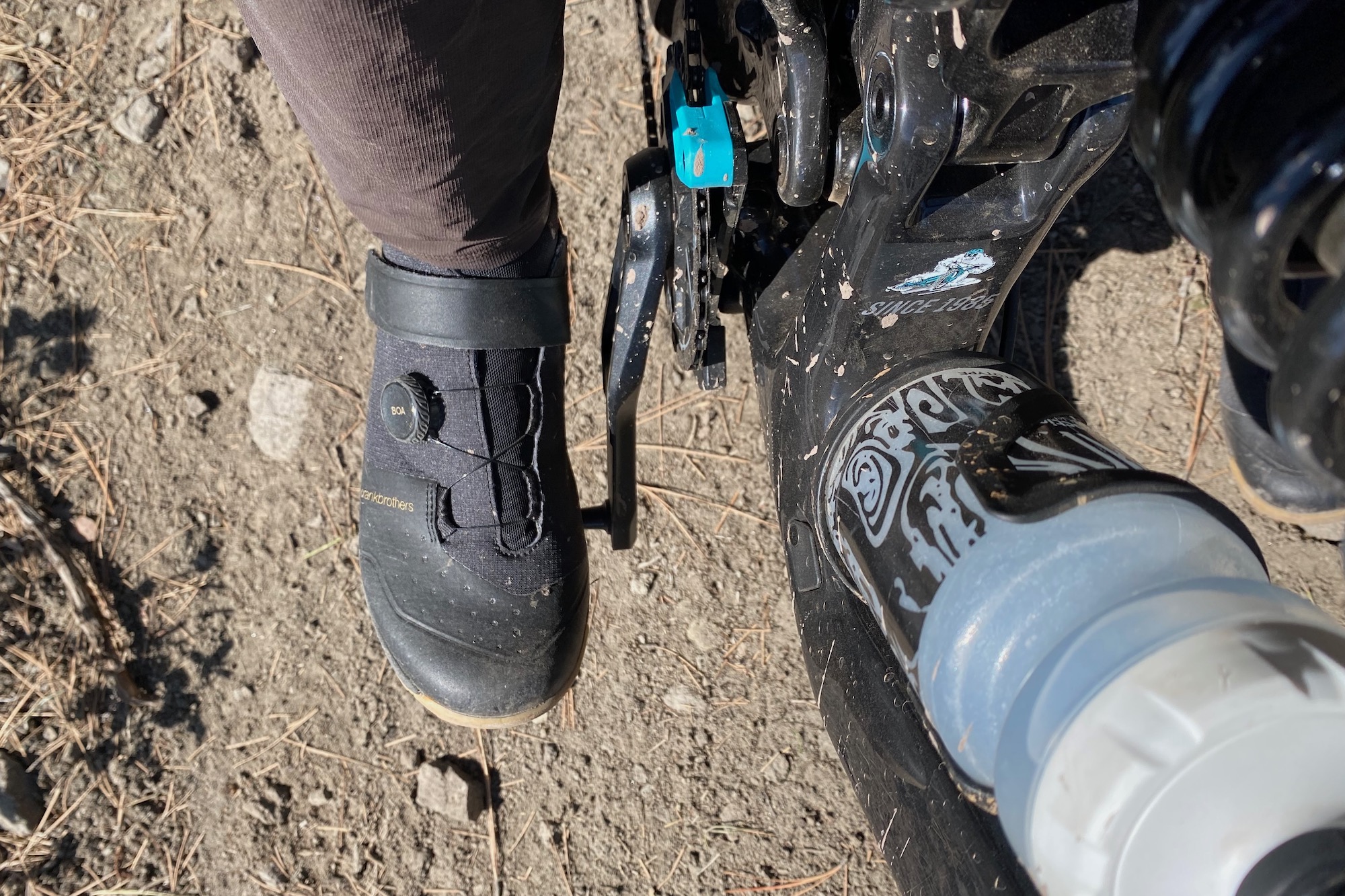
Price & Value
The price of mountain bike shoes varies pretty significantly, with the models we tested ranging from $80 up to $450. Typically, the most expensive shoes have the highest performance, although that performance will only really be appreciated by certain riders for very specific reasons.
Budget
If you don’t have a lot of money to spend, fear not, there are some solid mountain bike shoes on the market that get the job done without breaking the bank. Budget-friendly shoes, between roughly $80 and $130, are typically less specific in their intended use, making them good options for those getting into the sport, less frequent, or more casual riders who don’t demand the highest performance.
Shoes in this price range typically have simpler designs, less exotic materials (no carbon fiber here), and use less expensive laces or Velcro for closures to help keep the price down.
Our favorite budget shoe is the Specialized 2FO Roost Clip ($130). These shoes combine casual styling with a balanced sole stiffness, grippy, walkable soles, and traditional laces. They are a great all-around option for general trail riding, plus they can usually be found on sale, which makes them an even better value.
Likewise, if your riding leans more toward the cross-country side of the spectrum, the Specialized Recon 1 ($120) is one of the best deals out there. They look just like their more expensive siblings and boast the convenience of BOA lacing, comfortable uppers, and a moderate sole stiffness that’s great for non-competitive riders.
If you’re on a tighter budget, even a shoe like the Giro Berm ($80) works well enough. They may not be the most stylish, but the comfortable fit, decent pedaling efficiency, and easy walkability make them a very affordable entry point to clipless mountain bike shoes.
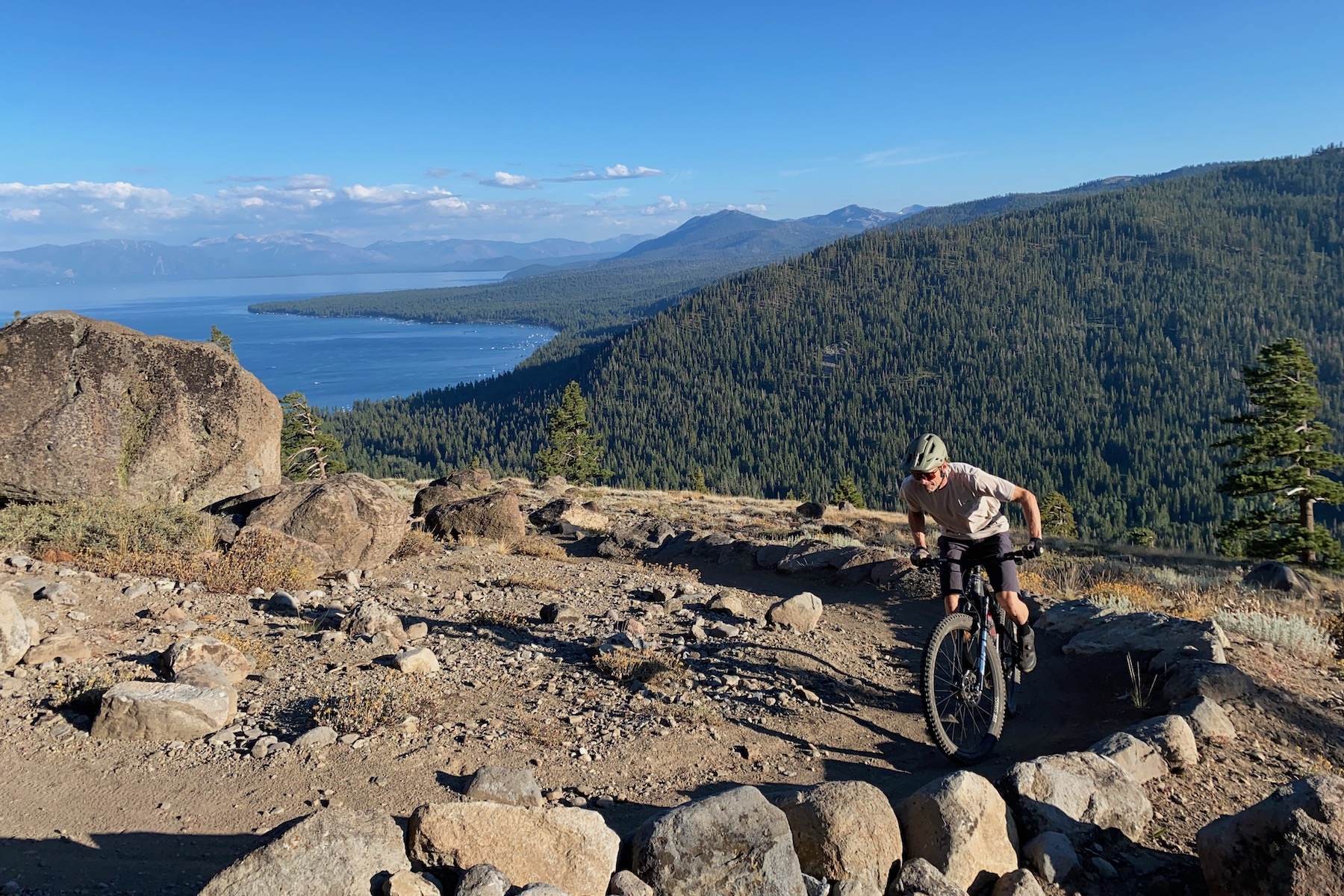
Mid-Tier
The $150-250 price range will be where most people find the best price-to-performance ratio. Here we find shoes that tend to be a little higher-performance, often with stiffer soles, BOA dials, and features that may make them better suited to more specific riding styles and the varying needs that go along with them. Still, many shoes in this price tier are generalists that can serve riders well across different disciplines, from everyday trail rides to laps at the bike park.
Our top-rated shoe for trail riding is the Crankbrothers Mallet Trail BOA ($220). This shoe provides an excellent blend of a solid pedaling platform, a comfortable fit, moderate foot protection, good off-the-bike traction, and a reasonable weight, making them well-suited for everything from backcountry epics to enduro racing.
Similarly, the Giro Sector ($240) offers a similar fit, tech, and most of the performance of high-end race shoes, but with a little more versatility and a more wallet-friendly price. The Sector’s carbon composite sole isn’t race shoe stiff but adequate to make them plenty efficient for high mileage XC, light trail, and gravel riding. Giro’s unique Synchwire uppers are super breathable, and two BOA dials make it easy to dial in the perfect fit.
Premium
Above the $300 mark, we get into the high-end of the mountain bike shoe market. The majority of shoes in this price range are highly specialized and geared toward cross-country racers seeking shoes that combine low weight and the highest level of pedaling efficiency. Fancy materials like stiff carbon fiber soles, lightweight and breathable uppers, and BOA closures are the norm here, all of which contribute to driving the price up while keeping the weight down.
The top-rated Shimano S-Phyre XC9 ($450) is a prime example. These shoes have an ultra-stiff carbon sole, supple synthetic uppers, and dual BOA dials that provide a glove-like fit. With impressive pedaling efficiency and shockingly low weight, these shoes are a top choice for everyone from amateur racers to world-cup-level pros seeking marginal gains.
Lower down in the premium price range, the Fizik Vento Ferox Carbon ($300) costs a fair amount less — even though it is still quite expensive — and performs similarly with only a small weight penalty.
While shoes at the upper end of the price spectrum may give some riders the performance advantages they need and want, they certainly aren’t the best choice for all riders. In fact, most non-competitive riders will be better served by moderately priced shoes that provide a better balance of performance attributes.
Frequently Asked Questions
Sure, you can ride a mountain bike in just about any shoes you want, but mountain bike shoes are always our recommendation because they are specifically designed for that purpose. If you mountain bike once or twice a year, it may not be worth it to you to spring for mountain bike specific shoes, but if you ride with any frequency, the performance benefits of shoes made for the purpose should not be overlooked.
Whether you’re riding cross country, trail, enduro, or downhill, there are models designed to be optimal for each type of riding. Mountain bike shoes generally have more rigid soles to promote more efficient power transfer when pedaling and prevent foot fatigue when descending. Grippy outsoles provide traction on the pedals and when off the bike walking on varied terrain.
Protective features like padding and reinforced areas are integrated into many designs to ward off rock strikes to the toes and heels. And, of course, shoes designed to be used with clipless pedals have a cleat mount area for the cleat that is necessary for clipping into the pedal.
There’s really no right answer to this question, as it typically comes down to personal preference and the type of riding you’re doing. Each pedal style has pros and cons. Most riders choose one or the other, while some will switch back and forth to enjoy the benefits of both styles.
Clipless pedals provide a mechanical connection to the pedal, keep your feet in the perfect spot, and help to maximize your pedaling effort through the full pedal stroke. For this reason, they are typically preferred by cross-country riders/racers and others who put in big miles and want to be as efficient as possible. The downsides are that they take some getting used to and awkward falls are not uncommon when learning, and you generally have less foot mobility and freedom of movement.
Flat pedals and flat pedal shoes offer greater foot mobility with varying support and grip depending on the platform size, pin style/placement, and sole rubber/tread design. Flat pedals can be very grippy and secure, however, they do not provide a mechanical connection to the pedals, which results in a slight decrease in pedaling efficiency. It is also possible to bounce off the pedals in rough terrain or slip a foot off while climbing, which can be potentially very painful if/when the pedal pins make contact with your shins.
The term “clipless” is definitely confusing due to the fact that you actually clip in to clipless pedals. The term clipless goes back decades, to a time when most pedals had toe clips, or toe cages, that wrapped up over the toe of your shoes to help prevent your feet from slipping off the front of the pedal.
When Shimano developed its original SPD pedal system, it did not have the toe clip, and thus the term clipless was born. These days, clipless pedals are often referred to as clip, clip-in, and SPD, which are less confusing.
Of course. While we generally recommend road-specific shoes for pure road cycling, there’s no reason that you can’t use mountain bike shoes for riding on the road or gravel bike. Generally speaking, cross-country style shoes will be the best fit for this as they tend to provide the best pedaling efficiency with stiffer soles and lighter weights.
In theory, a shoe like the Shimano S-Phyre XC9 or the Specialized S-Works Recon could have you covered for XC, gravel, and road riding as long as you have the same pedals across all the bikes.
This really depends on your budget, but also your needs and wants from your shoes. Prices vary quite significantly between the least and most expensive models we tested, as does performance. If you’re seeking the highest in performance, particularly for cross-country riding and racing, then you’ll need to be willing and able to spend a bit more for high-end shoes to meet your performance expectations. Top-of-the-line cross-country shoes can cost upward of $400, but often, brands have several versions that cost less and offer similar features and performance.
Shoes for trail and gravity riding tend to be less expensive than their cross-country counterparts, although the high-end models can still cost up to around $250. That said, they have a more approachable price range, with models starting around $100-125 and performance differences being less dramatic than their XC counterparts.
At the lowest end of the price spectrum, below $100, several brands make entry-level shoes that will serve more casual or infrequent riders well. These models can’t compete with more expensive shoes, but they can absolutely get the job done, and they will work much better than riding in your old jogging shoes. Trust us.
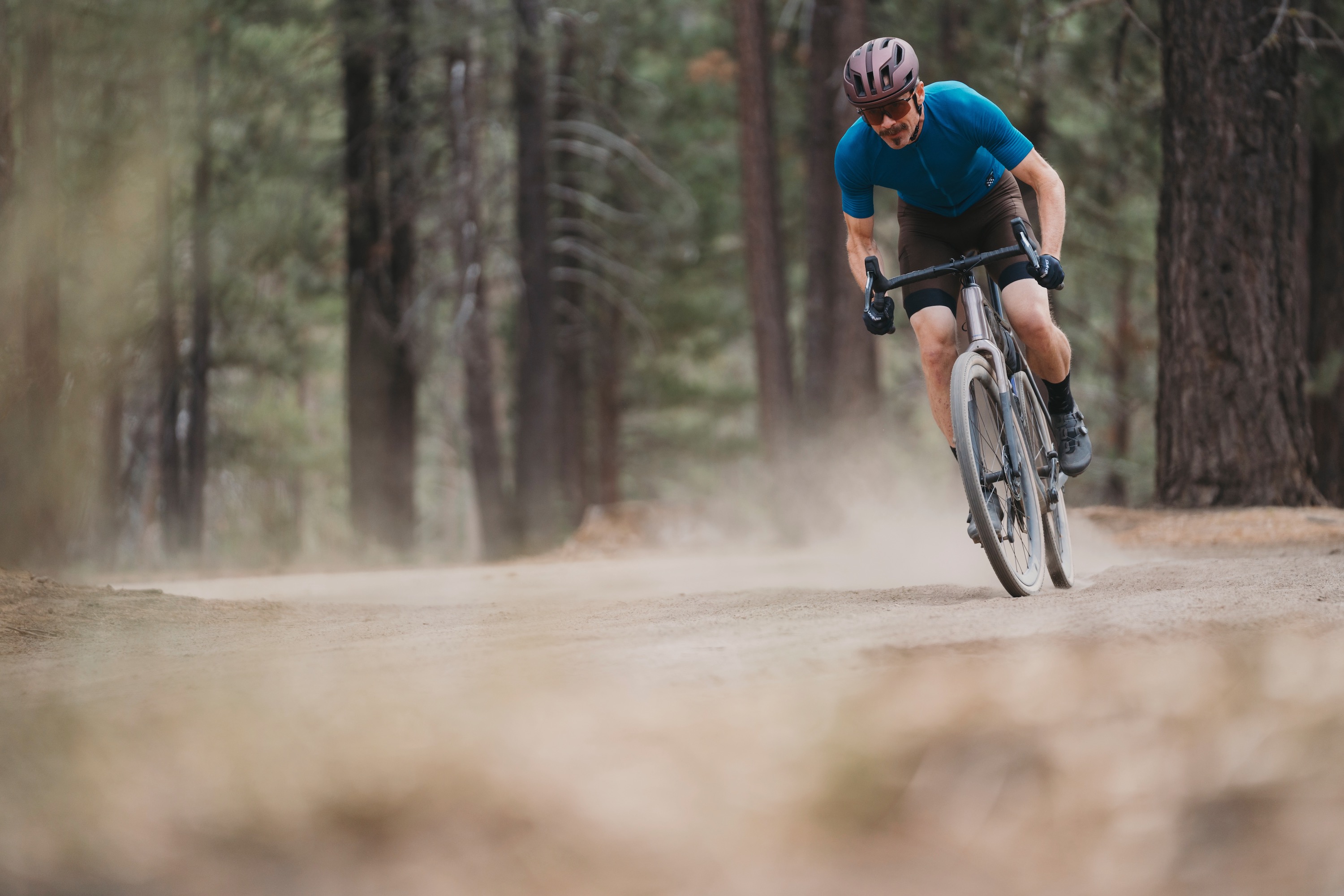
The Best Gravel Bike Shoes of 2025
We tested 13 models from top brands like Shimano, Fizik, Specialized, and more to find the best gravel bike shoes.

The Best Hitch Bike Racks of 2025
We tested the best hitch bike racks for 2025 with options for every budget. Top picks include Thule, Kuat, RockyMounts, and more.
